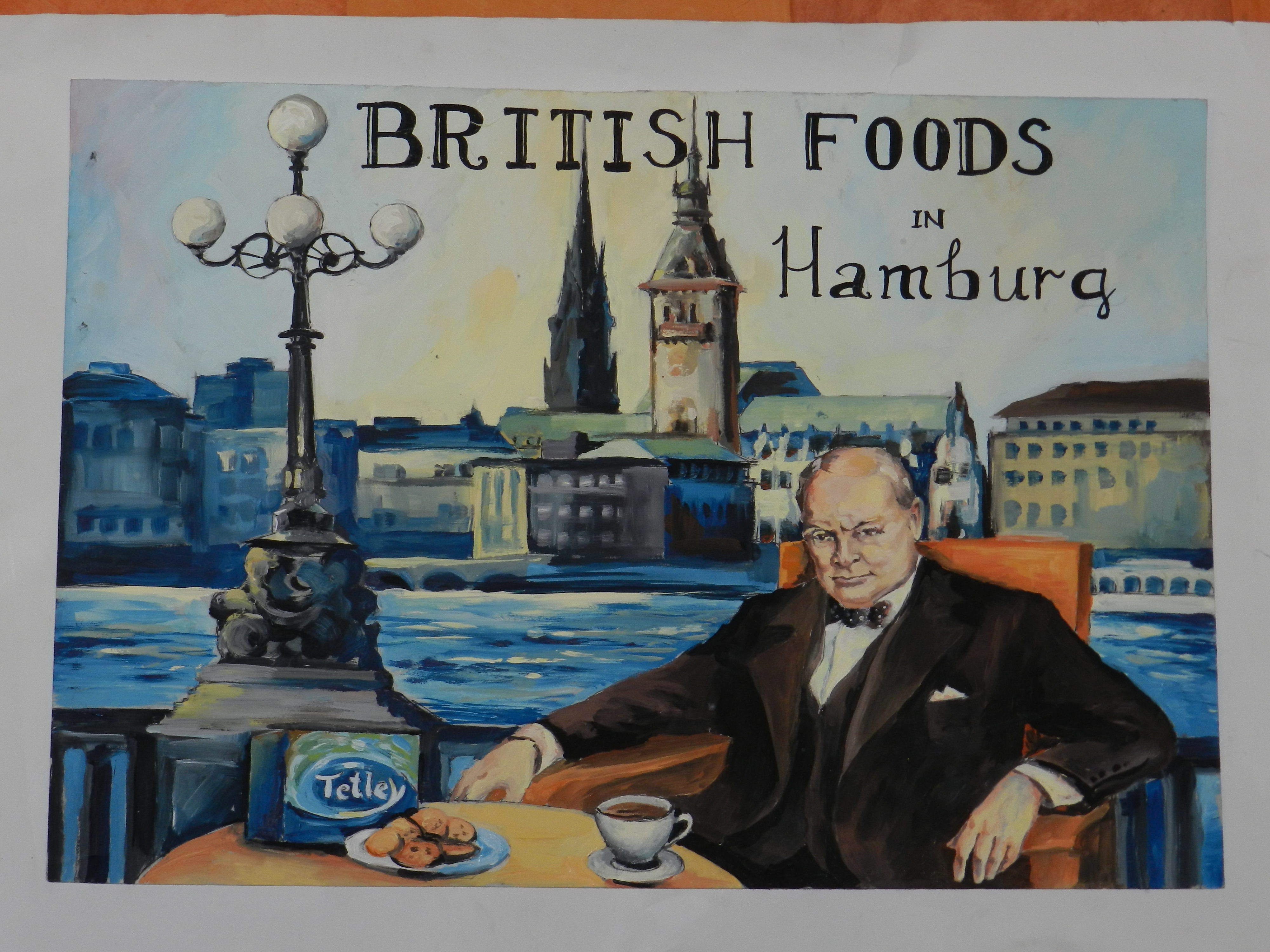

But as I am fascinated with business systems and human responses to it I cannot stop experimenting with new products and asking the question why do people buy rubbish even though they know it is rubbish?
And why people who have well-paid jobs pretend that they deserve the money and believe only they can do it , whilst at the same time spend so much time errecting barriers to ensure that noone else can prove the contrary.
Moreover, how is it that despite the real increase in capital wealth and formation, there is a perception of having less money, whereas those who suffer from absolute poverty are ignored or put into the pot of the "undeserving poor"
Our new project
Having tried to volunteer for various Aid Projects and being rejected
We decided to start one ourselves;
In the East of Germany
A few pictures, and wait till you find out what we will turn it into.
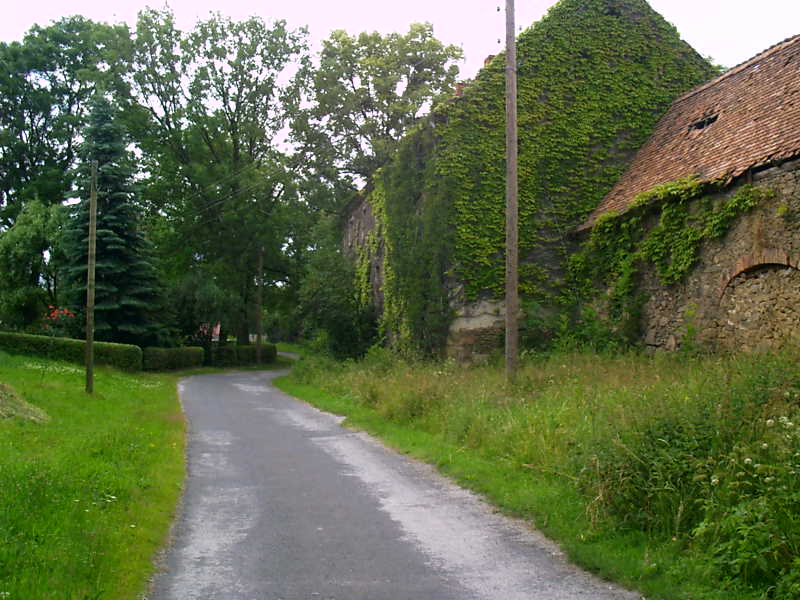
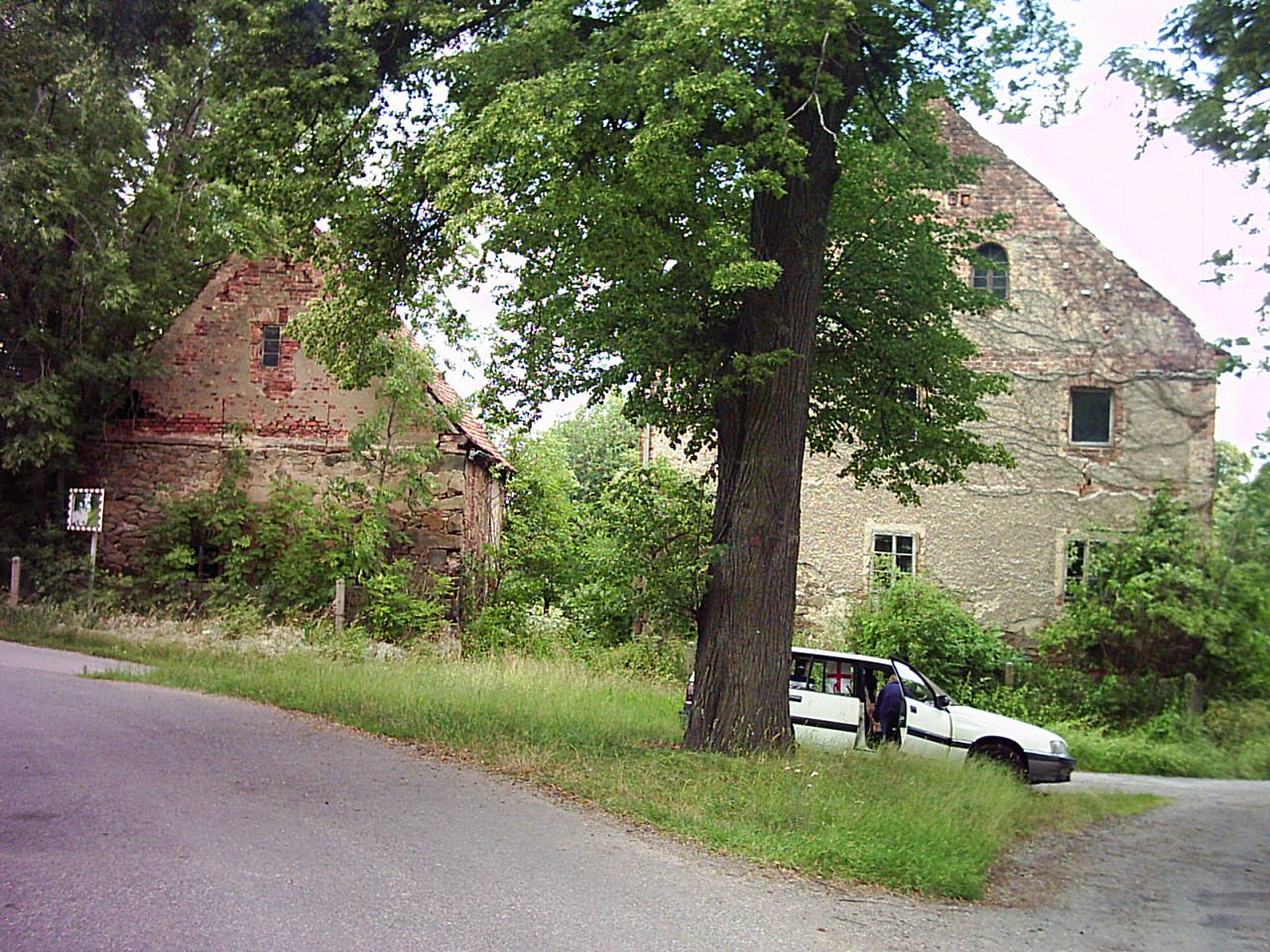
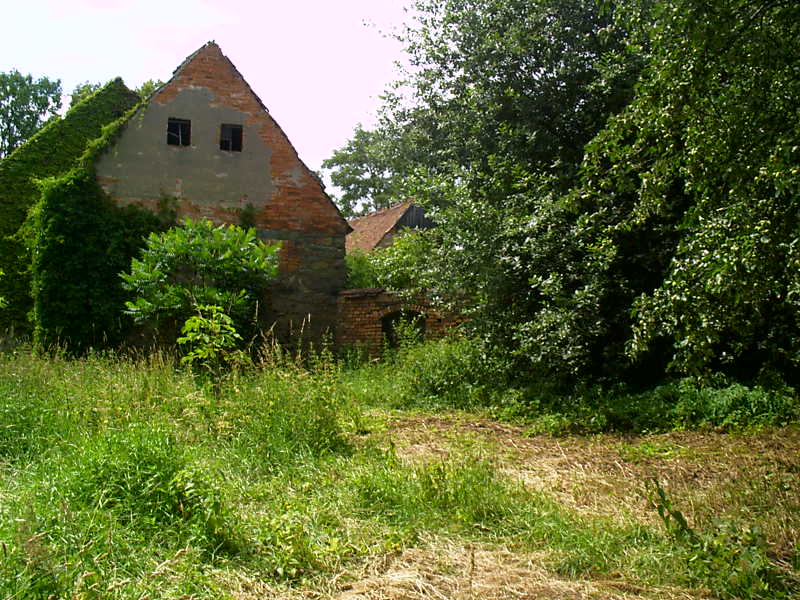
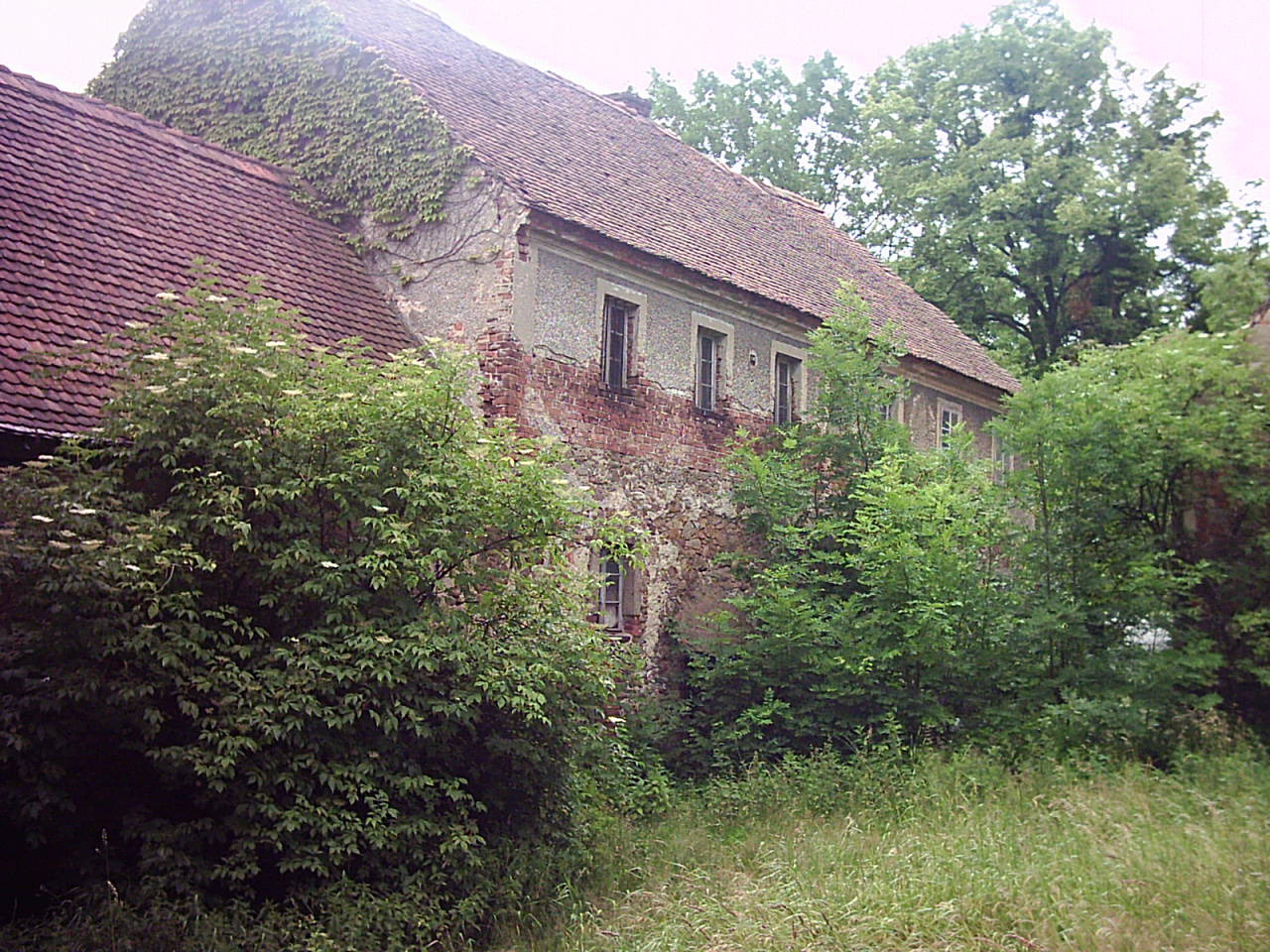
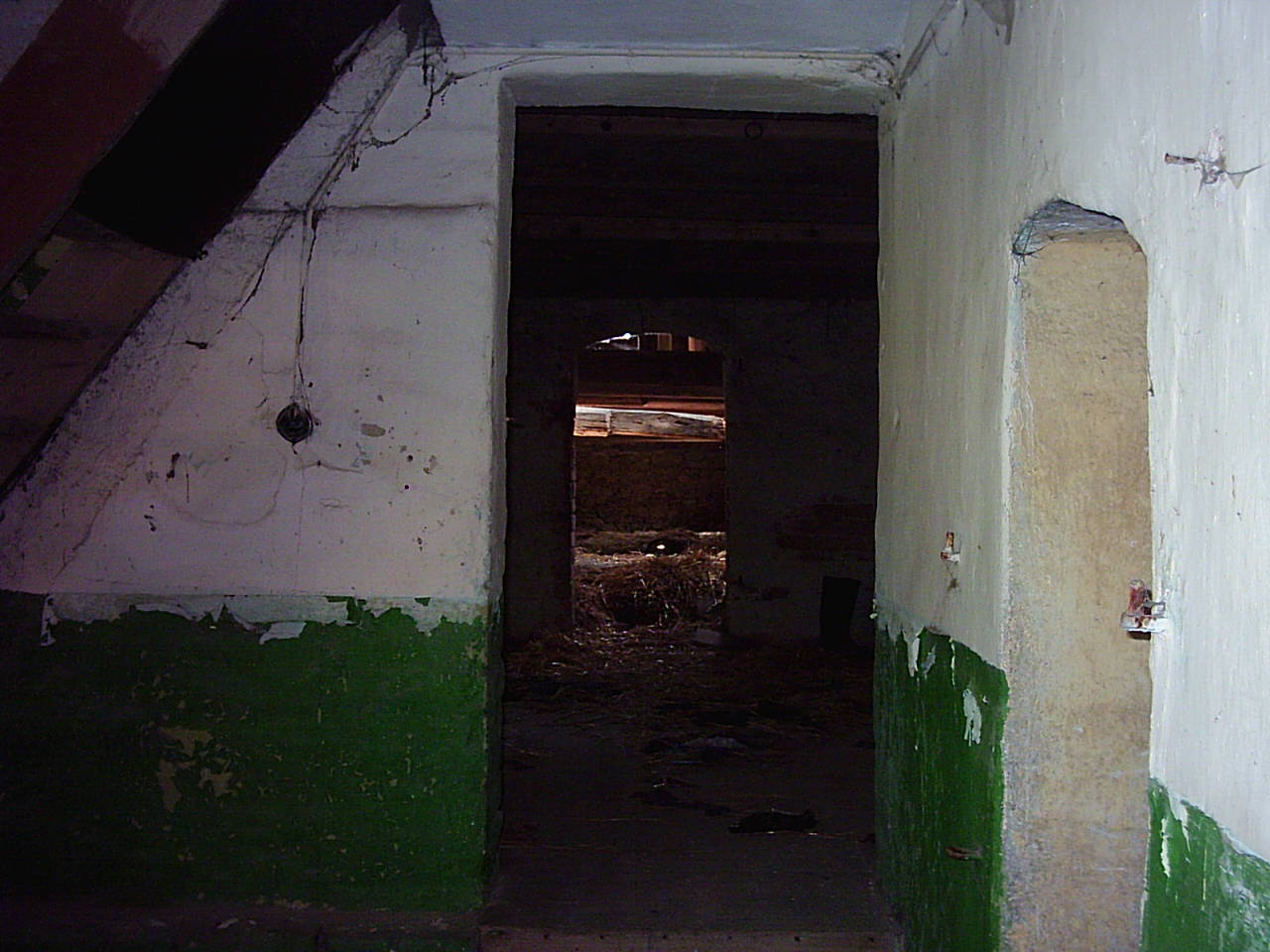
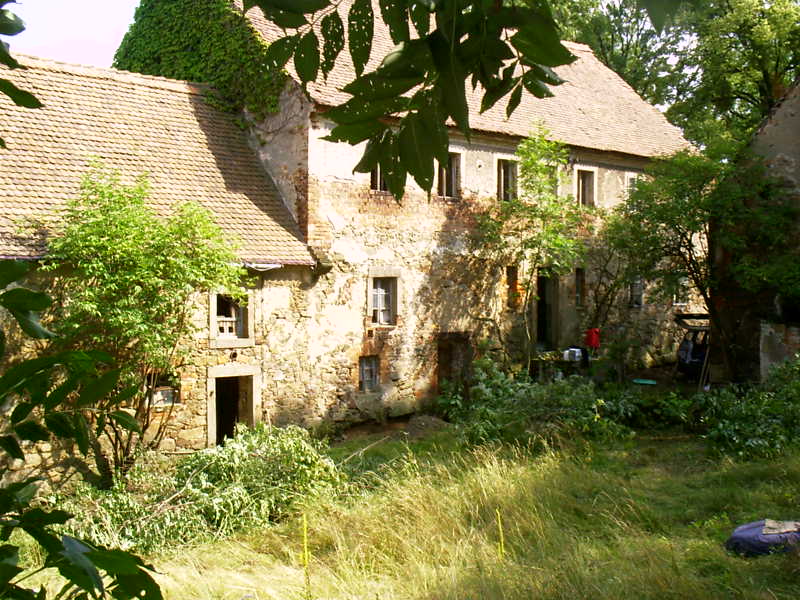
Tradesmans entrance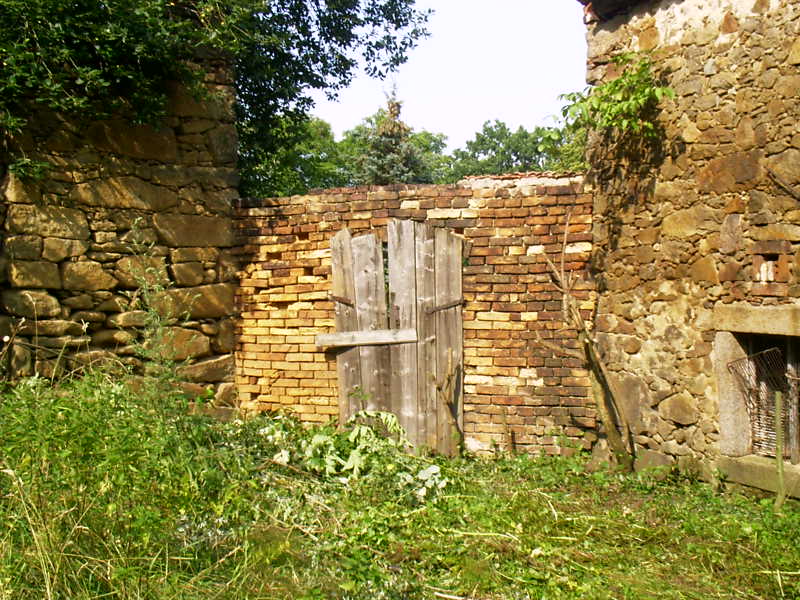
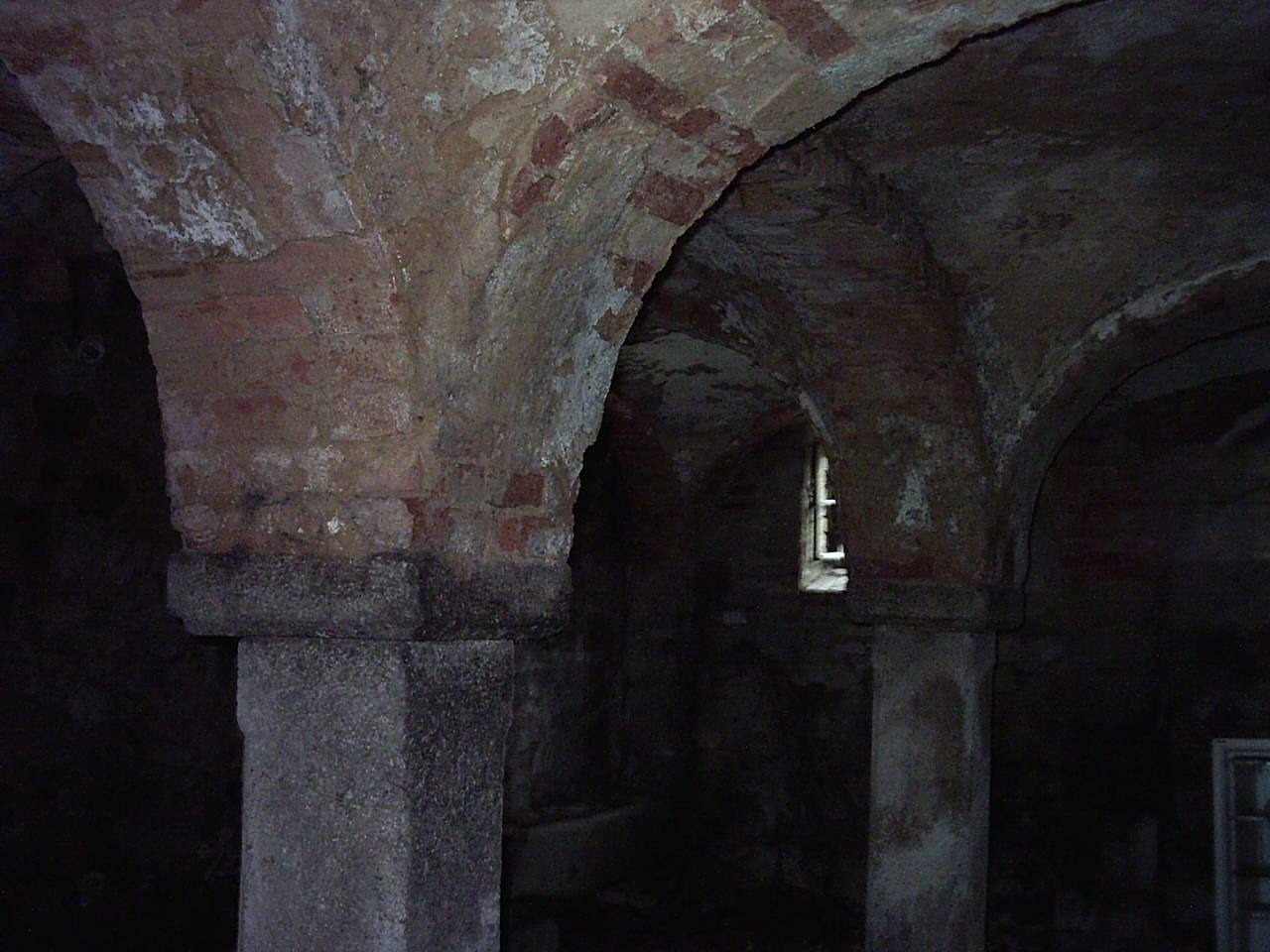 The wine cellar
The wine cellar
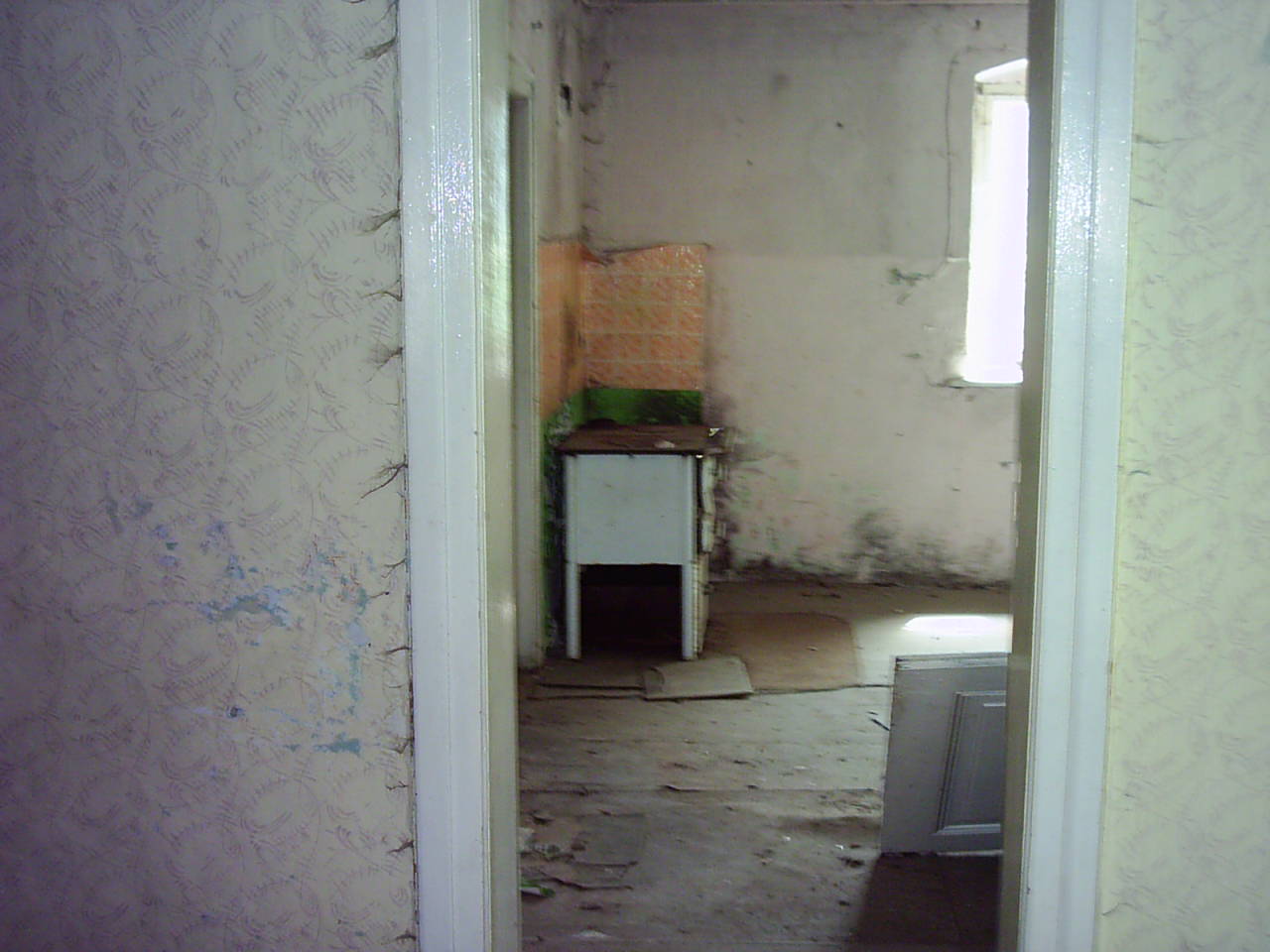
One of the many light rooms. no water or electricity. Experience life as they did 100 years ago. But we have a house well
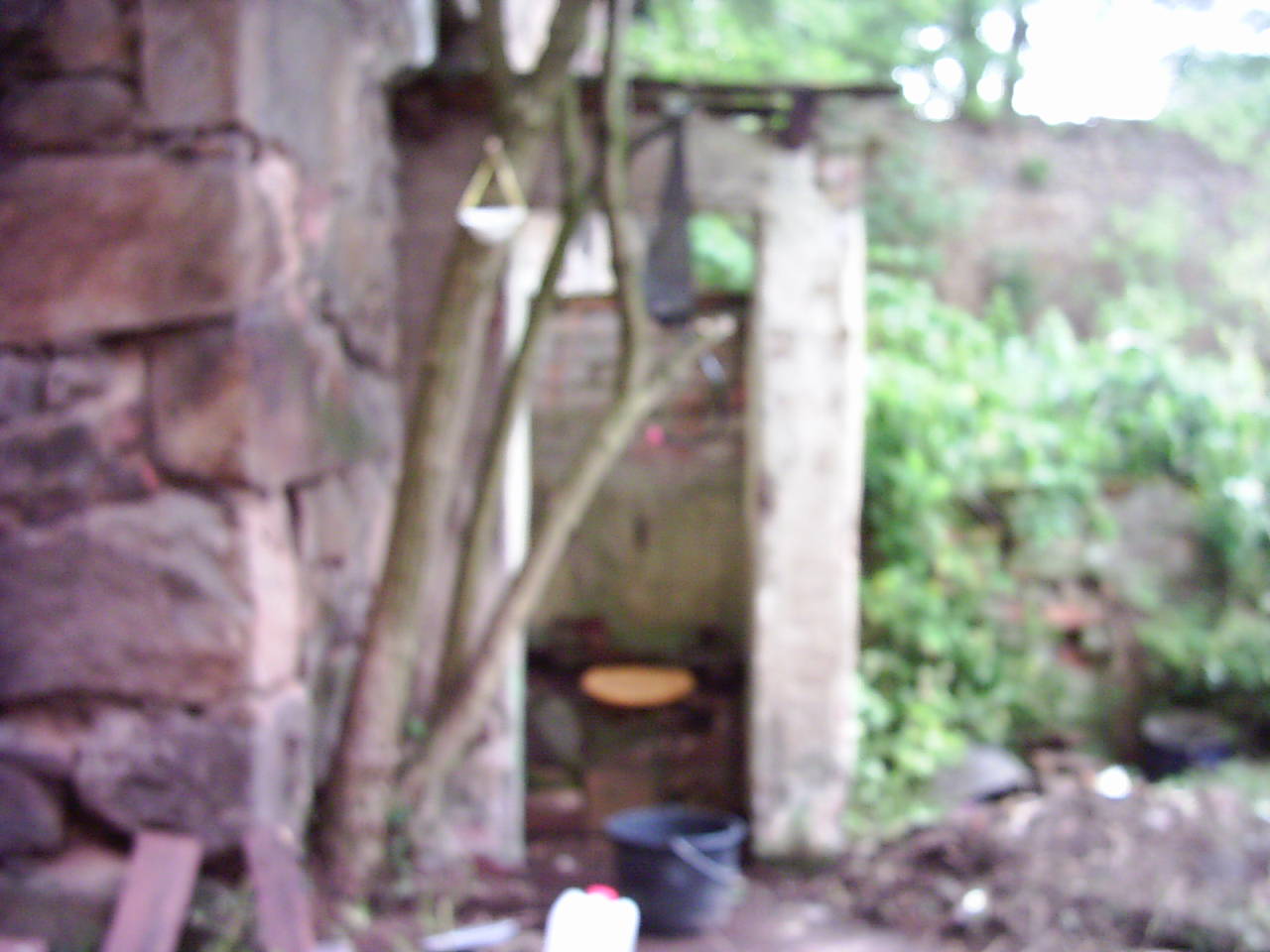 The well ventilated toilet.
The well ventilated toilet.
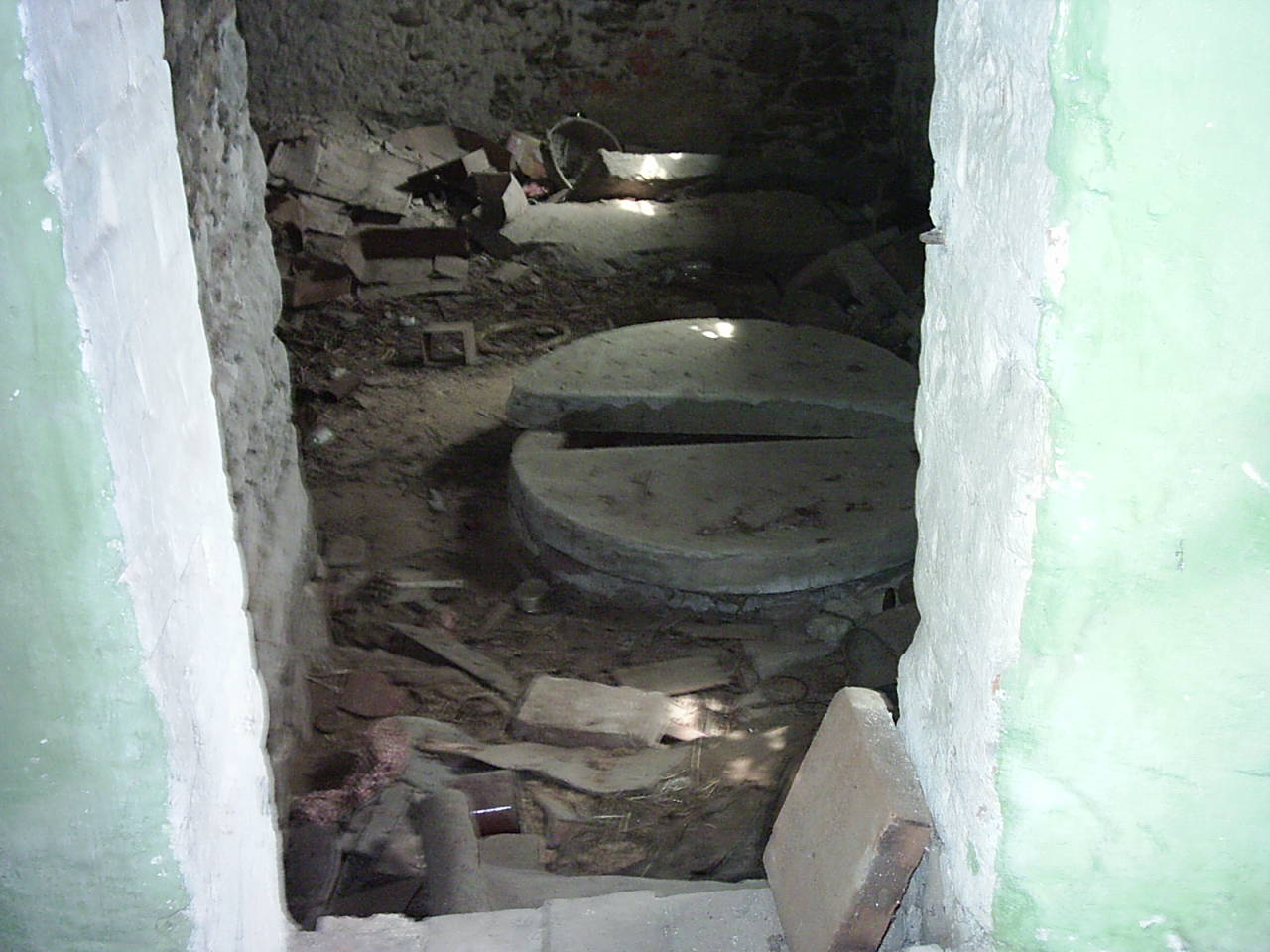
This is the House well and wash room. The room is 9 m2 and next door is a smoking cabinet for the hinds of ham
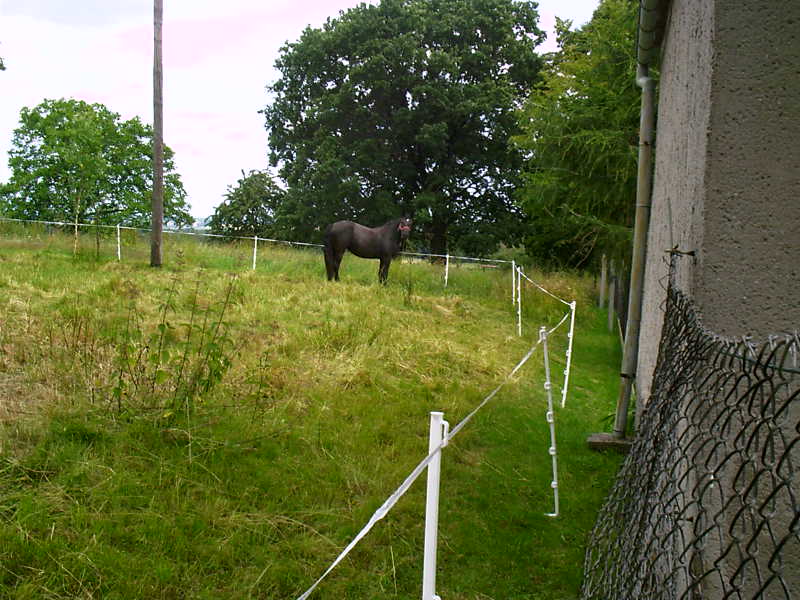 The paddock.
The paddock.
This area has apple, cherry,walnut and pear trees. The ground is fertile thanks to the horse and sheep which have been using it for the last 15 years
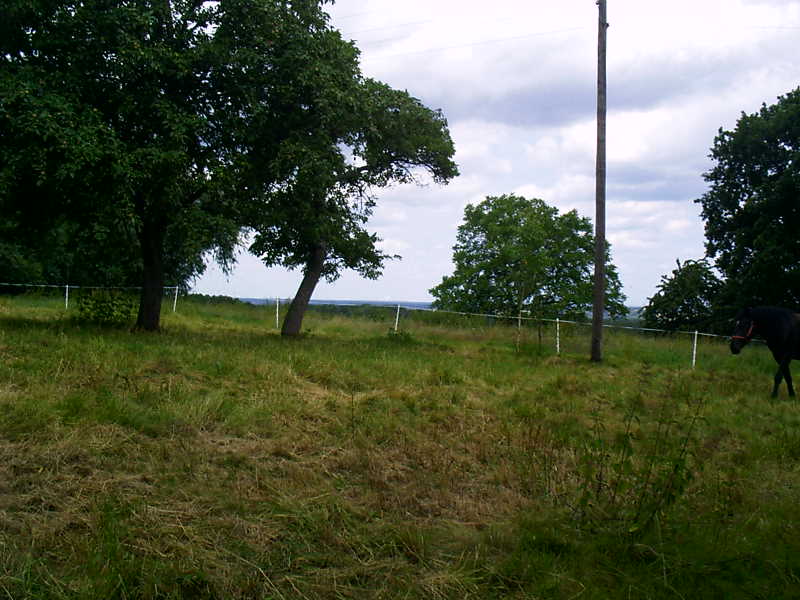
Yes, we can play football on the field
A view over our land
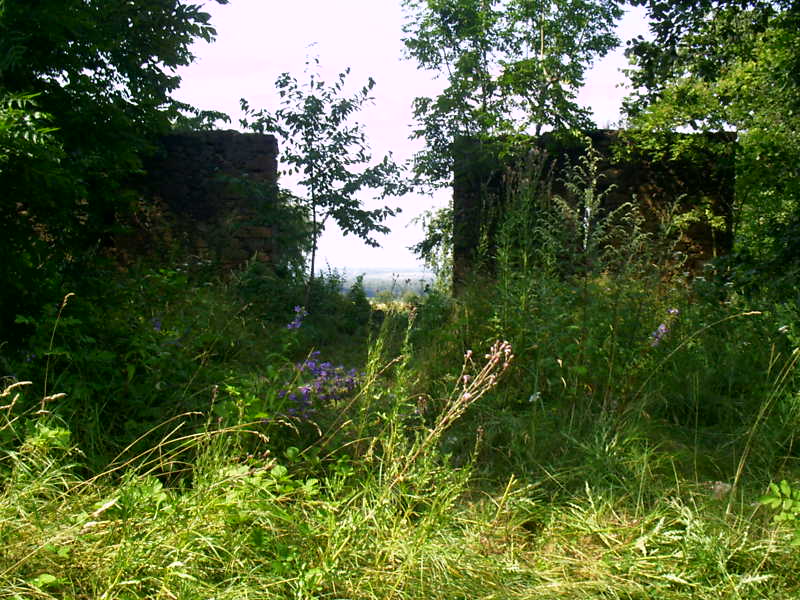
Background information to the Sachens
http://www.kessler-web.co.uk/History/KingListsEurope/GermanySaxons.htm
| Töpfer | |||
|---|---|---|---|
| Eines der beliebtesten Wanderziele im Zittauer Gebirge ist das Seitenmassiv des Töpfers (582 m). Bekannt ist der Töpfer durch interessante Felsgebilde, wie die "Brütende Henne", das "Felsentor", "Schildkröte", "Papagei", "Küken" und "Wakelstein". Auf dem Töpfer befindet sich seit 1860 eine Bergbaude. | |||
 |
 |
 | |
| Vom "Felsentor" neben der Berggaststätte "Töpferbaude" und von der "Böhmischen Aussicht" hat der Besucher einen wunderbaren Ausblick über Teile des Zittauer Gebirges, zum Olbersdorfer See und den Türmen der Stadt Zittau. Auf dem Töpfer werden regelmäßig katholische Berggottesdienste gehalten. | |||
| Eine gemütliche Baude mit rustikaler Gaststube (25 Plätze), Veranda (40 Plätze) und Vereinszimmer (20 Plätze), Übernachtungsmöglichkeiten für 12 bis 15 Personen, lädt Sie ein. Genießen Sie Baudenabende und Lagerfeuer. |
 | ||
| [zurück] | |||
A little bit of history surrounding the area of Spittel in Saxony | |||||||||||||||||||||||||||||||||||||||||||||||||||||||||||||||||||||||||||||||||||||||||||||||||||||||||||||||||||||||||||||||||||||||||||||||||||||||||||||||||||||||||||||||||||||||||||||||||||||||||||||||||||||||||||||||||||||||||||||||||||||||||
Click on green above to get to web site and links
This website provides summaries, in varying degrees of detail, of the military and diplomatic developments of the Thirty Years War.
The Thirty Years War is one of the great conflicts of early modern European history.
The Thirty Years War consisted of a series of declared and undeclared wars which raged through the years 1618-1648 throughout central Europe.
During the Thirty Years War the opponents were, on the one hand, the House of Austria: the Habsburg Holy Roman Emperors Ferdinand II and Ferdinand III together with their Spanish cousin Philip IV.
During the long course of the Thirty Years War the Habsburgs were opposed by various international opponents of House of Austria: the Danish, Dutch and, above all, France and Sweden.
In addition to its international dimensions the Thirty Years War was a German civil war. The principalities which made up Germany took up arms for or against the Habsburgs or, most commonly, both at different times during the war’s 30 years.
The Thirty Years War was also, at least in part, a religious war among Catholics, Lutherans and Calvinists. Ferdinand II and, to a lesser degree, his primary ally Maximillian I represented the re-Catholicizing zeal of the Jesuit Counter-reformation, while Frederick V of the Palatinate represented the equally militant forces of Calvinism.
The series of conflicts, military and political, which make up the Thirty Years War are highly complex.
Under the Peace of Augsburg in 1555 Lutheranism had been given official recognition in the Holy Roman Empire. Lands of the Roman church which had previously been taken by secular powers were retained by them. German rulers could also impose their religion on their subjects.
However, the Peace did not provide a permanent framework for religious settlement in Germany. A number of rulers became Calvinists and thus at least arguably outside the pale of the Peace. Protestants continued to take over Catholic properties, particularly in North Germany. The Catholics commanded a majority in most of the organs of government; the Protestants came to distrust these bodies and the machinery of government began to break down.
The Catholics and Protestants formed armed alliances to preserve their rights: the Catholic League under Maximilian I of Bavaria and the Protestant Union under Frederick V of the Palatinate.
Meanwhile, in Bohemia, Moravia and Austria dissension between the Habsburgs had enabled the local elites to extort religious freedom from their rulers. The Habsburgs gradually began to chip away at these concessions.
This phase of the Thirty Years War encompassed the years 1618 through 1621.
Faced with increasing pressure from the Habsburgs, the Bohemians rose in revolt. They deposed the Habsburgs and crowned Frederick V of the Palatinate as their King.
Initially, the revolt seemed destined for success. However, Ferdinand II struck back, subsidized by his Spanish relatives and in alliance with the Catholic League and with Lutheran Saxony. The Bohemians were utterly defeated near Prague at the White Mountain.
Simultaneously the Spanish had invaded and conquered the Lower Palatinate, Frederick’s territories on the Rhine. This enabled the Spanish to secure the land route from their territories in Northern Italy to their lands in modern-day Belgium.
Follow these links for more information about the Bohemian Phase of the Thirty Years War:
This phase of the Thirty Years War encompassed the years 1621 to 1624.
Frederick V of the Palatinate and other Protestant rulers sought to regain the Rhenish Palatinate from the Spanish and the Catholic League. These efforts were supported by the Dutch who had been battling the Spaniards for independence since 1568. A strong Spanish presence on the Rhine was a strategic peril they could not ignore. All of these efforts were dismal failures.
Follow this link for more information about the Palatine Phase of the Thirty Years War:
This phase of the Thirty Years War encompassed the years 1625 to 1630.
Foreign powers opposed to the Habsburgs could not look with equanimity on the developments in Germany. The French, English and Dutch formed a league to oppose the Habsburgs. They found their champion in Christian IV of Denmark, who also had extensive possessions in northern Germany. Christian invaded, but was crushingly defeated by the army of the Catholic League and a new Imperial force under the enigmatic Bohemian condottiere Wallenstein.
Emboldened by victory, the Emperor issued the Edict of Restitution, requiring the return of all lands expropriated from the Roman church since the 1550’s.
Fearing Wallenstein’s power, the territorial rulers forced the Emperor to remove him from power and reduce the size of the Imperial army.
Follow these links for more information about the Danish Phase of the Thirty Years War:
This phase of the Thirty Years War encompassed the years 1630 through 1634.
Concerned by growing Habsburg power along the Baltic, Gustavus Adolphus of Sweden invaded northern Germany. He was not welcomed by his fellow Lutherans: his sole significant ally were the French, who subsidized his army.
After the Swede’s allied city of Magdeburg was destroyed by an Imperial army, the Protestants grew concerned and began to arm.
When the Imperial forces moved against Saxony, the Elector of Saxony threw in his lot with the Swedes. The Swedish army met the Imperials at Breitenfeld near Leipzig and annihilated them.
The Swedes promptly took over most of southwest Germany. The Emperor had no choice but to recall Wallenstein. The Swedes and Wallenstein’s new army met near Leipzig at Lützen. The battle was a draw, but Gustavus was killed.
Fearing Wallenstein’s power, and concerned by his intrigues with hostile powers, the Emperor had him killed.
The Imperial and Spanish armies joined and inflicted a crushing defeat on the Swedes at Nördlingen. All the Swedish gains in southern Germany were lost.
Follow these links for more information about the Swedish Phase of the Thirty Years War:
This phase of the Thirty Years War encompassed the years 1634 through 1648.
After Nördlingen most of the German territorial rulers made their peace with the Emperor. Under the resultant Peace of Prague most of the church lands in Protestant hand in 1627 were allowed to remain so.
The French declared war on Spain and increased the scope of their interventions in the Empire.
Gradually the Imperial forces were weakened. France took control of Alsace and much of the Rhineland while the Swedes took over or neutralized northern Germany and carried the war into Bohemia.
Follow these links for more information about the French Phase of the Thirty Years War:
Over the last four years of the war, the parties were actively negotiating at Osnabrück and Münster in Westphalia. On 24 October, 1648 the Peace of Westphalia was signed, ending the Thirty Years War.
The Swedes received a large cash indemnity and control over western Pomerania, Bremen and Verden. The French recieved rights (nature unclear) over Alsace. The control of the Emperor over the German territorial rulers was reduced to a nullity.
Within the German portion of the Empire, private exercise of non-conforming religion was permitted and the organs of government were rendered religiously neutral. Lands secularized by the Protestants in 1624 were generally allowed to remain so. However, in the Habsburg territories of Bohemia and Austria the Emperor was given a nearly free hand to re-impose Catholicism.
Follow these links for more information about the Peace of Westphalia and the end of the Thirty Years War:
Entire Site Copyright 1999-2004 Chris Atkinson. All Rights Reserved.
The Saxons of the 7th and 8th centuries were a Germanic people living between the lower Rhine and the lower Elbe. One group of these Saxons had emigrated to the British Isles in the 5th century. Charlemagne and his Franco-Carolingian empire led an embittered thirty years' war against them, which ended with the defeat of the Saxon Duke Widukind and his baptism in 785. In the 10th and 11th centuries the primary power base of the Saxon royal family lay in a duchy centred around the Harz and the lower Elbe. Its second ruler, Heinrich, was elected as the first German emperor in 919. In 1946 the new state of Lower Saxony was named to commemorate the old Saxon duchy.
After Henry the Lion, the powerful Duke of Saxony and Bavaria was defeated in 1176 by Emperor Frederick I Barbarossa, the boundaries of the duchy were reduced and redrawn to centre it on the middle Elbe with its capital at Wittenberg. The House of Askanier was given the duchy, and its duke given the rank of Elector, one of seven from the old regime, who had the privilege of electing the next emperor. When the last Saxon-Askanier Duke died without an heir in 1423, the Emperor passed the title and duchy to Frederick IV the Belligerent, Margrave of Meißen from the House of Wettin.
The House of Wettin had extended its territories in the 14th century from their homelands in Thuringia to the Saale and Elbe, and with this new acquisition had become a power to be reckoned with. The Mark Meißen was the land lying between the Saale and the Elbe and the uninhabited Erzgebirge or Ore Mountains, and was a colonial province of the empire in the 12th and 13th centuries, similar to Mark Brandenburg. Its ruler, the margrave was an appointee of the emperor. Settlers came from the Main, Rhine and Weser, the oldest parts of the empire to colonise the forests and moors, and build villages fortresses and churches.
In 928 Emperor Heinrich I fortified a cliff above the west bank of the Elbe as the main defence against the Slavs, calling it the Meißen Burgberg or Fortress Mountain which in time became the residence of the margrave. In 968 Emperor Otto I granted a bishopric to Meißen based on the Meißen Burgberg. The bishop and margrave together with a baron shared executive and judicial power in this area above the Elbe. This historical arrangement is reflected in today. The medieval cathedral is found just north of the manors of the fortress of the margrave, and lies at the western entrance of the Domberg or Cathedral Mountain, where the baron presided.
In 1089 Heinrich of Eilenburg was given the title of margrave by the emperor. Heinrich was the first of the Wettin family, who then reigned as margraves, dukes, electors and kings for the next 829 years. His successor, Margrave Konrad the Great (1123-56) is accredited with the actual foundation of the Wettin state of Meißen-Saxony. In their lands, which stretched from Coburg in the west to Niederlausitz in the east, the margraves owned several royal estates. However Meißen was the leading centre of their lands. It was here under Margrave Heinrich the Illustrious (1221-88) that high culture initially flowered. Heinrich's brother Dietrich, the Bishop of Naumburg ordered the building of the cathedral in Meißen, and employed the Master of Naumburg, whose workshop created many pieces for Meißen over the years.
The Meißen-Saxon region of that time enhanced its reputation as a centre of culture through exchanges with other centres of excellence. Unlike other imperial colonies, its population grew initially from both Germanic migrants and the local Western Slavs. This mixed population, which fought but also merged, needed a common language. The language of Martin Luther's Bible was adopted as the official Saxon language, but with the well-known Saxon dialect and its Slavic elements. Even the name of Sachsen or Saxony only came to be used for the land and its people in the late 15th century.
The main feature of the Meißen Burgberg and Domberg complex is the monumental Gothic cathedral, the third on the same site. In the latter part of the 13th century, the transept was constructed at the same time as was the Gothic choir of the Cologne cathedral. Sometime before 1288, it was enhanced with a high Gothic choir. Seven large stone statues from the workshop of the Master of Naumburg were placed in the choir in 1260. First and foremost were those of the financial patrons of the cathedral, Emperor Otto I and his wife Adelheid. These statues are amongst the greatest accomplishments of 13th century German sculpture. There was a change of plans for the building of the nave. Instead of having the customary basilica, it was decided to build a modern hall based on that of Marburg. This hall marked the climax of the architecture of the time.
Soon after his ascension to the throne in 1423, Frederick the Belligerent had the princely chapel in front of the western entrance of the cathedral constructed as a burial place for the Wettins. With the coming of the Reformation in 1539, the cathedral lost its function as the Bishop's Church. In 1904 the west towers were completed, as a result of late Romantic inspiration and Saxon patriotism. The famous silhouette of Meißen was finally completed.
After 1470 the royal brothers, Ernst and Albrecht had their architect Arnold of Westphalia build a new castle of incomparable beauty on the east side of the cathedral, as their official residence. Arnold, who died in 1481, was familiar with contemporary French castles which he used as a model for his own. The castle, later named Albrechtsburg or Albrecht's castle, was never used as a royal residence. The successors of the two brothers moved to Wittenberg and Dresden instead. The circular stone staircases in the fortress are constructed with virtuosity, and the graciously curved figures of the different vaults of charming fancy.
In order to cushion the fall of Meißen into provinciality, the rulers of the land founded a school there in 1543, an institute for the elite of the land from which Gotthold Ephraim Lessing later graduated. In addition the rulers moved their porcelain manufactory from Dresden to the Meißen Albrechtsburg in 1710, where its production secrets could best be protected.
Just as Meißen was the religious and administrative capital of the margraves in the Middle Ages, Freiberg was their financial and industrial capital. On the command of Margrave Otto, forests were cleared in the Freiberg area from 1162 onwards. Farming communities were founded, and in 1168 rich silver deposits were found in the fields of Christiansdorf. The margrave took over the ore-rich field for exploitation by miners from Harz, specially recruited for that purpose. As the mining industry became established throughout the region, there was a lot of freedom of movement, hence the name Freiberg or free mountain. However there was a Bergzehnt or mountain tithe to be paid to the rulers of the land. The still well-preserved city, which today has 50,000 inhabitants, grew in rapid and still perceivable steps from east to west. The irregular little village of Christiansdorf, later called Sächsstadt, is still visible within the city.
Around 1185, communities of traders became established about the Church of St Nikolai to the west. Around the year 1195, the officials of the Margrave, knights and foreign traders settled next to the oldest of the town's churches, the Marienkirche Cathedral, and the lower markets to the north. Margrave Dietrich had the upper city in the south-west built around the large upper markets by 1215. The sovereign's castle, Freudenstein was built on the far northern edge of town.
Around 1500 the standard of living and wealth reached its climax in this, the oldest of the Saxon mountain cities, whose walls were embellished with 39 towers. The houses of the upper classes of that time at both markets provide ready proof of this, as does the City Hall of 1474. After a fire destroyed the old Romanesque Marienkirche of 1484, a new Late Gothic church was constructed and completed in 1501. Among its extraordinary objects of interest is the Goldene Pforte or golden gateway from a time around 1230. Coming from the earlier church, it was very colourful and also had gold mountings. It was transferred to the new building in 1484. As of 1592 the Gothic choir was rebuilt in a impressive manner as the royal crypt of the Wettins. At its centre a sarcophagus was erected in 1563 for Moritz, the Elector of Saxony.
North of Freiberg in the vicinity of Noßen is a romantic landscaped park, established in 1810, where the remains of a large Cistercian cloister may be found which dates from the late 12th century to about the 15th century. Also found there is a classical mausoleum where the margraves were interred between the 12th and 14th centuries.
Vogtland is the name given to an historical area in the south-western corner of Saxony, which around 1200 was the territory ruled by the Prefects of Weida. Finally in 1569 this area was incorporated into the state of Saxony. The lie of the land drops off towards the north from the heights of the Western Erzgebirge on the borders of Bohemia, the upper Franconian Forest, the eastern Thuringian area between Schleiz and Gera, and the middle Saxon hill country near Zwickau. However near Klingenthal, the Aschberg and the Großen Rammelsberg reach elevations of 935 and 963 metres respectively. In the 12th century farmers from Franconia, western Thuringia and from what is today the Upper Palatinate settled in the forest-covered land, which was then sparsely inhabited by Slavic peoples.
In the late 12th century, the Hohenstaufen emperors attempted to counter-balance the power of the German duchies, by creating an imperial prefecture from these newly colonised areas together with Egerland in the south and Pleißenland around Altenburg in the north. However the Prefects of Weida, who had been appointed as administrators, soon aspired to reign as princes themselves. By the 16th century the houses of the Weida and Gera Prefects had either become unimportant or extinct, and the possessions of this Plauen dynasty finally fell into the hands of the royal Saxon family.
Plauen lies on the Elster river, the chief river of Vogtland, where several old long-distance roads cross in the central Vogtland basin. It won its city charter in the early 13th century. St. John's Church, the most significant church in the city was dedicated in 1122. Its fabric has been often remodelled, but was essentially completed by the year 1584. However it was destroyed in World War II, and was rebuilt by 1958. The City Hall, an important secular building was mostly constructed in 1508, and has typical Saxon Late Gothic arched curtain windows. After a fire, the south gable was rebuilt as a lovely facade in Renaissance style in 1584.
Whoever would like to get a taste of the unfortunately scanty remains of old Plauen, should visit the former upper-class house at Number 9 Noblestraße, along with the houses at Numbers 11 and 13. Together they make an extraordinary architectural complex of the late 18th century, and today form the Vogtland Regional Museum. It was the business house of the rich cotton dealer, Baumgärtel, whose standard of living and zest for life are portrayed in the stuccoed festive hall dating from 1786. Baumgärtel was the most successful of the Schleierherren or veil men of Plauen, who retailed woven fashion merchandise in the 18th century, and who were the predecessors of those rich lace manufacturers who exported their special Plauen lace throughout the world in the years following 1880.
The Lutheran church at the northern edge of the old city has existed since 1722, and is the oldest significant Baroque building in Saxony. Its four-winged altar, which was in the St. Thomas Church of Leipzig until 1722, was created around 1500 in the vicinity of Erfurt.
Reichenbach, the second largest city in Vogtland, is an old drapers' city and since the 19th century, a centre of large spinning mills, weaving mills and dye works. The city of Oelsnitz, which specialises in carpet making, has a church hall, which is one of uniform height often without naves, dating from the 14th to the 16th centuries, and also the remains of the Fortress Voigtsberg, a relic from the period of colonisation of the 13th century. In Landwürst is found the Vogtland Farmers' Museum, where you can view historical folk architecture.
For those interested in local customs, Vogtland with its particular dialect, folk music, folk dances and decoratively painted farmers' furniture provides a rich panorama. Their traditional love of music goes back to those religious exiles from northern Bohemia, who settled in Markneukirchen in 1677. Among them were superb violin makers, who continued to practise their ancient art in their new home. A museum has been established in the Paulusschlöß or Paul's Castle dating from 1784, to exhibit its unique cultural and economic history. Nearby Klingenthal is the centre for the production of mouth organs in Germany.
Since the 15th century Moritz Springs has been very well-known for the healing properties of its acidic mineral water. Next to it in the village of Elster, there have been baths since 1835. The original small bath houses with wooden tubs have made way progressively for a grand state-owned health spa resort with hotels, water drinking halls, parks, a spa house and a theatre. The resort, Bad Elster was made a city in 1935. In Bad Brambach mineral water was discovered to contain radium. This led to the development of the village into another well-known health spa resort.
Vogtland is a significant transportation corridor assisting both its old and new industries, which witnessed a resurgence with the era of trains. The Göltsch Valley train bridge was built in 1841 by the engineer Andreas Schubert, and is an extraordinary technical achievement which still serves its original purpose today.
To the north of the Western Erzgebirge in the valley of the Zwickauer Mulde, lies the old industrial trade city of Zwickau with its 120,000 inhabitants. Its development from a small Slavic settlement in the early Middle Ages to the significant metropolis of today was driven by its position on the old highway from Franconia through Hof and on to Chemnitz Dresden and Silesia, as well as its intermediate position between Leipzig and Prague on the other side of the Erzgebirge. In the 12th century new settlers came from Franconia to settle in this forest-covered hill country. They were farmers and sons of artisans from the Main and the Rhine.
Zwickau was first mentioned in 1118 as a fortress with a customs station. The fortress was located in the north-east corner of the old city, next to where later stood the Margrave's residence, Burg Osterstein. It was renovated in the 16th century for use as a public office, and later as a prison and workhouse. Today it is a shockingly desolate monument. South of the fortress rises the Katharienenkirche, the second most important church of the old city. It is richly furnished, and among other things contains an altar made in 1517 in the workshop of Lucas Cranach the Elder. South and west of this, the most ancient corner of the old city, the medieval city of tradesmen and craftsmen sprang up in the 12th century around a central square and Hauptmarkt or main market. In 1172 the city received its civil charter. Another settlement was founded around the Marienkirche in the 13th century. By the end of that century, the different parts of the city had grown together and were enclosed by a city wall.
The city retained this structure through to the end of World War II, but has suffered from modern industrialisation in the last two decades. Many old streets with their residences and business houses typical of the late Middle Ages and the Jugenstil or Art Nouveau Era have been replaced by the dreary product of modern architecture, and the cityscape has been destroyed to a large extent. The remaining portions of the old city around the Marienstraße, the buildings on the Hauptmarkt and the Marienkirche hardly make up for the barbaric and misdirected civil policies of the last two decades.
Zwickau's greatest period of prosperity came with the spectacular discovery of silver in 1470 at Schneeberg or snow mountain, which lies in the hills south of Zwickau. The mining business, the foundation of the mining city of Schneeberg and the massive influx of miners, businessmen and fortune seekers made the fortunes of Zwickau. Silver was minted into coins and exported. The Zwickau patrician, Martin Riemer, a mining mogul of his time was renowned as the richest man in all Saxony. His house built in 1479 still stands at Number 8 Hauptmarkt, and his epitaph is now found in the Chapel of the Marienkirche. The export of these treasures of the Erzgebirge financed the importation of art works and a boom in the construction of public and private buildings.
Around 1479 the Marienkirche acquired a large altar with two fixed and four movable wings. Four picture panels present scenes from the life of Mary, and are by the hand of Michael Wohlgemut of Nuremberg, the teacher of Albrecht Dürer. The church may be technically categorised as a Late Gothic Upper Saxon hall church. The choir was rebuilt between 1505 and 1507. The 1677 addition to the top of the spire with its two lanterns served as a model for the Katharinenkirche in Hamburg. Its impressively wide roominess serves as the treasure store of old Zwickau. A large Late Gothic wooden reliquary carved with intricate filigrees is preserved there since 1507. It was exhibited in late medieval times as part of their Easter passion plays. Also preserved there since 1502 is the Beweinung Christi or Lamentation of Christ, the most renown work of the woodcarver, Peter Breuer of Zwickau.
At the Hauptmarkt is found the Late Gothic City Hall, which was remodelled in Neo Gothic style in 1862 with a tin facade after the style of Karl Friedrich Schinkel. Inside there is a room worthwhile seeing which was constructed in 1477. The Drapers' Hall next door was built between 1522 and 1525, and is now a department store. In it the cloth makers, garment cutters, bakers and butchers sold their wares. Inside this splendidly gabled building with its front decorated in half columns and curved rib-vaulting, the City Theatre was built in 1823. At the western end of the Marktplatz or market square is found a corner house where that famous native of Zwickau, Robert Schumann was born in 1810.
Zwickau's second greatest period of prosperity began in the early 19th century. While coal had been mined since the Middle Ages, it was now extracted far more extensively. As early as 1826, the first steam engine was put into service. At the city's edge mining derricks were built and mullock heaps grew where the city wall had been replaced by a ring road in 1798. A highly specialised metallurgical industry grew up, and many neighbouring agricultural villages became centres for production of textiles. Population grew explosively, and the region around Zwickau became one of the most densely settled regions of Europe. In 1904 August Horch started production of automobiles in Zwickau. In 1909 his firm took the name of Audi, and in 1932 merged with DKW to form the Chemnitz Automobile Union. This amalgamated firm was subsequently taken over by VEB Sachsenring, which since the 1960's has produced that famous compact car, the Trabant.
In the area around Zwickau is found the small city of Werdau with its large and well known textile and railway-car manufactories, the city of Crimmitschau which has become famous for its extensive production of textiles and the long tradition of its workers' union, and the small industrial city of Meerane. Of a completely different character is the charming town of Waldenburg, which until 1945 was the Residence of the Princes of Schönberg-Waldenburg. It has a castle built from 1909 to 1914, a natural history collection worth seeing, a park on the Mulde and a pretty market place. Glauchau is a city of textile manufactories and workers' unions, which also has two castles from the 15th and 16th centuries formerly occupied by the Princes of Schönberg. Oberlungwitz is a typical Saxon industrial village weaving and manufacturing stockings. It stretches for kilometres and was proclaimed a city in 1936. Limbach and Hohenstein-Ernsthal are also old centres for the production of stockings and gloves. The author Karl May was born there in 1842.
The Saxon Erzgebirge forms the old border between Saxony and Bohemia. From west to east they stretch from Klingenthal and Falkenstein in Vogtland for a distance of approximately 140 kilometres to the upper Elbe in the vicinity of Pirna. The mountain ridge is practically identical to the border, one of the few political borders of Central Europe which has not changed since the Middle Ages. The vast high plateaux are characteristic of the eastern Erzgebirge. In the middle section, near to the source of the Zwickauer Mulde, and close to Zschopau, Schneeberg, Annaberg, Oberwiesenthal and Marienberg, the mountains reach a height of over 1000 metres. The highest peak is the Fichtelberg at 1214 metres. A drive down from Oberwiesenthal across Gottesgab and again down to the Bohemian Joachimsthal makes for a dramatically rapid descent out of the mountains. Not to be overlooked are the Bohemian forests which the Erzgebirge people loved, wrote and sang songs about. Sadly the air pollution of Bohemia's coal works have largely destroyed these forests.
Zwickau, Chemnitz and Freiberg lie in the northern foothills of the mountains and provide gateways into this border territory, which was uninhabited until the 12th century. From these early city centres on the old trade route from Franconia to Silesia, there were even older pathways over the mountain heights into Bohemia. As was the case throughout the central German territories, new settlers from Franconia and the Rhine migrated from the 12th century on into the dense Mirquidi forest which then clothed the mountains. The representatives of the empire, the margraves, noblemen and clerics who sponsored these eastern colonies had promised personal freedom to these new settlers before they left their old homelands.
The new settlers moved in along the river valleys and high passes of the Erzgebirge which are still followed by today's country roads. They built the typical Waldhufendörfer, long stretched out settlements which followed the brooks and possessed very narrow but exceedingly long fields. In these villages the houses and courtyards are encountered first, then the garden, meadow, field and finally forest. This structure is still recognisable in some villages, in spite of the comparatively recent collectivisation of the farms. Many of these Erzgebirge villages stretch for kilometres. Gelenau, for example, is eight kilometres long! These settlements auf wilder Wurzel, or on wild roots usually preceded the construction of fortresses by the emperor or his princes. From these fortified points, work was organised and the settlements protected and administered. In the western Erzgebirge, they were principally Hartenstein, Stein, Wildenfels, Schwarzenberg and Hoheneck, in the central Erzgebirge, Zschopau, Scharfenstein, Wolkenstein and Rauenstein, and in the eastern section, Frauenstein, Lauenstein, Bärenstein and Dohna.
In the Freiberg region colonisation by the farmers developed along side that of the miners after 1168. In the upper Erzgebirge between Schneeberg, Annaberg and Marienberg, there was a new and considerable growth in settlement after 1470 due to the large silver deposits discovered in Schneeberg. The news drew people from Zwickau and from the other more distant margrave lands. The Berggeschrei or call-of-the-mountain was also followed by many people from Franconia. As with the earlier great silver find of 1168 in Freiberg, the basic rule was that while everyone could prospect with freedom, the Bergrechts or mountain tithe had to be paid to the rulers. No one had much faith in the permanence of the find, and on the Schneeberg silver fields the miners merely erected simple huts. However this mining industry of the late Middle Ages soon showed that it had the power to build cities. The ruler of the land, Duke Albrecht came to Schneeberg, and even he tried his hand, descending into the St Georg quarry where he "found" an enormous ore deposit containing 400 Zentner or hundredweight of silver. Afterwards he laid the cornerstone of the St Wolfgang Church and ensured orderly city government.
Around 1500 there were already about 8,000 people living in Schneeberg. Between 1470 and 1500 the proceeds from silver mining reached six million guilders. In 1478, some 167 quarries were being worked in the city and its immediate vicinity. The original parish church had become too small, and was torn down in 1516, to be replaced by a spectacular new one dedicated to the mining patron, St Wolfgang. The church was not completed until 1540, and since it was being built during the Reformation, its style was light, sombre and almost without sculptural ornamentation. In 1539 the reigning princes donated a large winged altar from the workshops of Lucas Cranach the Elder. The twelve picture panel of the altar instruct in the Lutheran faith, and show, amongst other things, Adam condemned to hell and St John pointing to Christ.
Schneeberg was devastated by a fire in 1719. Four hundred buildings were damaged, and only the interior of St Wolfgang remained intact. Consequently the streetscape which ascends from the large market place to the church now features Baroque houses, of which the most beautiful is the Bortenreuter House from 1725. It is the site of the Museum of Miners' Folk Art, which is especially active in Schneeberg.
The Knappschaft or Miners' Guild evolved from the religious Bruderschaften der Bergknappen or Miners' Brotherhood, and their parades are still great events today. Of special note is the local custom of constructing animated Lichterpyramiden or pyramids of light and Weihnachtsbergen or Christmas mountains in the festive season. Their miniatures, buildings and scenery depict the joyous Christian message, as well as the character of the mine workers, and demonstrate the piousness of these mountain people, as well as their interest in technical equipment.
The beginnings of Annaberg, the main centre for the upper Erzgebirge, date from the year 1492, when a large silver vein was discovered at Schreckenberg. As in Schneeberg twenty years earlier, large numbers of people streamed into the area in order to prospect for the ore. In 1496 the ruler of the land, Duke Georg the Bearded established a commission to plan and direct the building of a city at Pöhlberg. Their terms of reference required that the new city was to be sited away from the ore body, and close to an adequate supply of drinking water. Unlike in Schneeberg where anarchy reigned, Annaberg was built according to an ordered plan, with the mining industrial area separate from the city itself. In 1497 Annaberg obtained its civic charter and right to mint money, and by 1540 some 12,000 people lived within its walls.
In just a short time Annaberg had developed into a thriving metropolis. This had been made possible by the favourable Freiberg mining laws which had been adopted, the establishment of a mint, the sizeable amounts of capital invested by rich mining entrepreneurs in ever deeper mines, and the invention and use of mine lifts, drainage and conveyor machines and smelting plants to exploit such mines. Chief among the inventive technicians who made this possible was Georg Aricola, the humanist, doctor and author of the first book specialising in the mining industry. However eventually the Annaberg silver mining industry fell into decline towards the close of the 16th century.
It was not only the small and large entrepreneurs who earned a lot of quick money from silver. The reigning prince took in gigantic sums of money from the Bergzehnt or mountain tithe and the Münzregal or mint. The Wettin lands of the dynastiesof Albrecht and Ernst were considered the wealthiest in the empire around 1500. The construction of the magnificent princely residences in Meißen, Dresden, Torgau and Wittenberg, as well as the large hall churches, not only in the Erzgebirge but also in Zwickau, Chemnitz, Freiberg and Pirna, would not have been possible without the Bergsegen or blessing of the mine.
The masterpiece of the new endeavours in the Erzgebirge was the St Annenkirche in Annaberg. In 1499 Duke Georg ordered that a large new church be constructed in the upper city. The Swabians, Peter Ulrich and Konrad Pflüger, and the Franconian, Jakob Heilmann created a bright evenly formed hall. The vivid original colouring of the vault has been restored in the last few years, from which the kings and prophets of the Old Testament peer down in base relief. Some of the ribbing is painted differently from the surfaces of the vault, and the skilfully carved key stones show the coats-of-arms of the rulers, the city, the Knappschaft or Miners' Guild and the financial patrons. The hall was built before the Reformation and dedicated to the veneration of St Anna, the patron saint of mining. It also served as a large lecture hall for the young folk of the town. The church's most valuable extravagance is the high altar, made around 1520 in Augsburg by Adolf Daucher. The altar is made from various kinds of stones, and decorated with Jesse's line, to which St Anna also belongs. Duke Georg was often in Augsburg, where he had business and diplomatic connections with Jakob Fugger.
Of the many extravagances of the church melding the end of the Gothic with the beginning of the Renaissance, is the famous altar of the Knappschaft or Miners' Guild from 1521. On its reverse can be found four panels by Hans Hesse, depicting the business of mining in the background. Parts of the legends of the mining sponsors, Daniel and Wolfgang, and of the saga of Knappius, the first Annaberg miner, are woven together with a technical rendering of mining operations. This proud and rich mining city was burned to ashes in 1604. However the interior of St Anna survived intact. At that time the mining industry was in decline, so the rebuilding of the city proceeded slowly and in a limited way. Eventually alternative businesses, such as the bobbin- and silver-lace industries were started.
In Annaberg's Erzgebirge Museum, not only can the vivid history of the city be followed, but also the typical lighting corbel carved in the form of miners and angels and other folk art works can be seen as well. In the nearby Frohnerhammer can be seen a fascinating large operating 17th century iron works run by water power.
Marienberg is yet another famous mining city of the Erzgebirge. It was laid out in 1521 on the plan of a chess board, after an important silver find was made there in 1519. A reflection of the ideal Renaissance city was realised here in the raw climate of the upper Erzgebirge. Poverty followed the decline in mining at Marienberg, as it did in so many other areas of the Erzgebirge between the 17th and 19th centuries, for the land was not suitable for farming and the income needed for their prosperity. With innate toughness, resourcefulness and curiosity, the people of the Erzgebirge looked for new sources for their livelihood and ensure their survival. One way was the production of wood products and toys in Olbernhau and Seiffen, where there is a well-known toy museum exhibiting all manner of nutcrackers. Another means of earning a living was by the production of stockings, as is seen in the Strumpfdorfern or stocking-producing villages around Thalheim.
The people of Aue specialised in metal items and cutlery. In the small city of Schwarzenberg, paper and bathtubs are produced. There is here an old Burgschloß or fortress castle, and an endearing Baroque church with interesting galleries. An old tin mine has flourished in Altenberg in the eastern Erzgebirge since the 15th century, although it is closed now as it is unprofitable. Only its exhibition mine is worth seeing nowadays. Since 1858 the Erzgebirge have been accessible by train. The charming landscape, the forests, valleys and high moors, the old mining cities, the folk art, the Christmas customs, and of course the winter sports, drew many foreigners from the large cities of central and western Germany.
After 1945 and the arrival of the Soviets, many things changed for the worse. Uranium mining, the almost total expropriation of the typically small local industries and the incorporation of the remaining ones into Kombinaten or state industries, the collectivisation of agriculture, and the die-back of the mountain forests due to acid rain, have all led to sad and extreme changes in the natural environment, where farmers and miners had founded their culture, villages and cities in the Middle Ages.
By the end of the Baroque period, Chemnitz was a city of employment, daily wages and small businesses, and of inventors, technicians and risk-taking entrepreneurs. In this city neither castles for the Wettin monarchs nor for the noble courts had ever been built, but it still was severely damaged during the Thirty Years' War. In 1800 this medieval city had approximately 10,000 inhabitants, and had begun to expand outside its former city walls. The stocking-making industry had existed alongside the older linen and cloth production industries since the early 18th century. The introduction of the first weaving machine into Chemnitz in 1782 heralded a turbulent expansion of this industry, which had previously been the province of the poor who made stockings at home in their villages. The industrial production of stockings took a major leap forward with the development of the first mechanical weaver's loom in 1845 by the Schönherr brothers of Chemnitz. The Industrial Revolution broke into an unprecedented sprint. Dozens of giant factories were founded. Chemnitz grew as a metropolis particularly after 1871, and large numbers of smoke stacks became the mark of the city. They wafted trails of smoke over the old city, like an emblem of its thriving capitalism. By 1928 some 500 million pairs of stockings were produced in Chemnitz and its vicinity.
Residential and industrial buildings occupied the entire Chemnitz valley basin, and its suburbs spilled over into the neighbouring valleys. The population grew explosively. By 1900, it had reached 200,000, and by 1914 there were 326,000. The peak came in 1930 when the population reached 360,000. In the east in Sonnenberg, large and now partially restored workers' quarters had been built. In the west at Kassberg and on Parkstraße, the rich factory owners, who had often started out as simple labourers, lived in their new villas. Some still exist, like the Hartmann Villa, formerly a pioneer palace, and the famous Esche Villa of Henry van der Velde.
By the late 19th century, production of machinery had overtaken the textile industry in importance in Chemnitz. One of its most important founders was Richard Hartmann (1809-78), who moved to Chemnitz as a simple labourer. He later built textile machines and then steam engines, and finally became the leading steam locomotive producer in central Germany. Other great machine producers of the time were Schubert and Salzer, Louis Schönherr and Moritz Samuel Esche. A newer industry, the automobile industry reached its peak in 1932, when the Saxon motorcycle and automobile producers Horch, Wanderer, Audi and DKW consolidated into the Chemnitz Auto Union.
By the 19th century, the concentration of tens of thousands of workers in Chemnitz brought social tensions and strikes. Chemnitz became a centre of the workers' movement, and in 1874 the voters were represented in parliament by a Social Democrat. The Communist Party also had wide support. A far-sighted city administration had an appropriate new City Hall built, and created an impressive forum on the Theatre Square between 1906 and 1909, with the Opera House and Museum building.
The Neo-Gothic St Petri Church of 1888 and the Hotel Chemnitzer Hof of 1928, an elegant social focal point in the late 1920's and 30's, were integrated into this forum. With the building of schools and teaching institutions, the establishment of parks and sport areas, as well as the fostering of culture by the city, art clubs and private benefactors, Chemnitz successfully overcame the one-sidedness often associated with an industrial city. Outstanding examples of modern architecture arose, such as the Industrial School and the Realgymnasium, a secondary school concentrating on the sciences, built in 1927-8. Other examples are the city pool of 1935, the Schoken department store built by Erich Mendelssohn in 1930, and the Camann spinning mill built in Furth in 1931.
On the 5 March 1945 the inner city of Chemnitz was almost entirely destroyed by allied bombers. There remained only the New City Hall, parts of the Old City Hall from 1498 and the now isolated Church of St Jakobi behind it, with only fragments of a few other buildings. Rebuilding was a long time coming, and then only under the most difficult of circumstances and ideological constraints. The west side of the Marktplatz was reconstructed in 1954 with its Siegert House built in the Baroque style in 1741. Together with the rebuilding of the adjacent Klosterstraße, it was an encouraging start. Unfortunately there was no follow up. Instead the former buildings and streets of the inner city were ignored. In their places new main roads like the Straße der Nationen and Karl Marx Allee, and desolate uniform buildings almost devoid of decoration were built. City flair and urban quality were now hard to find in these inhospitable districts, which only a short time earlier had been honoured as prime examples of socialist city planning. Even the name of Chemnitz was changed to Karl Marx Stadt on the 10 May 1953. With reunification its name was reverted to Chemnitz on the 1 June 1990. The city now boasts 320,000 inhabitants, but still needs a lot of work before it can be transformed into an attractive metropolis once again. Only through historical photographs of the Marktplatz, Johannisplatz and Königstraße can the whirlwind metropolis that was Chemnitz now be seen.
The medieval beginnings of that city can be found 1.5 kilometres to the north at Schoßberg. There on a hill overlooking the Chemnitz River, Emperor Lothar founded a Benedictine cloister by a ford in 1136. In the sparsely settled Chemnitz Valley, the cloister became a base for colonising the eastern Erzgebirge and establishment of the church. In 1143 Emperor Lothar III granted the monks the right to hold a market for foreign trade on land now occupied by the Chemnitz Market. Around this market the city grew up to the usual structure of the 12th and 13th centuries, with the Church of St Jakobi at the centre of the fortified town. The Roteturm or Red Tower from the 12th century is highly visible, and the only remaining part of the old city's fortification. These two are the only remaining vestiges of that city.
The last two abbots, Heinrich of Schleinitz and Hilarius of Rehburg, built a new church and cloister on the Schloßberg roughly between 1485 and 1525. The Schloßkirche or Cloister Church was a typical Late-Gothic Saxon hall church. After its superb interior renovation, it may be considered the most beautiful in all Chemnitz. Of particular interest is its Late Gothic main entry, decorated by a branching stone structure with four stories where groups of miniatures can be found, including the donors, Lothar and Richenza, the saints, the Trinity and his angels. The stone mason, Hans Witten created this entry between 1503 and 1505, and originally had it painted in vivid colours. However this was modified by a successor in 1525. Recently the entry was moved into the church to help in its preservation.
Another astounding work by Hans Witten is the 360 cm high wood cut, the Geißelsäule or Flagellants' Column from about 1515, with the suffering Christ bound to a tree stump and surrounded by executioners. The Reformation came to Chemnitz in 1539, and caused the cloister to be dissolved shortly afterwards in 1541. For some time the building was used as an office, and designated a castle. In 1931 the Museum of City History was established in the old church, and came to house many remarkable examples of the art and cultural history of Chemnitz. It has now been closed for a decade, as this formerly rich and prosperous city was not able to maintain this treasure house of splendid and vibrant history in an appropriate condition under the infamous restrictions of the late DDR.
The country town of Zschopau is part of the Chemnitz area, lying south of the city on the road to Bohemia. It has been another base for travellers into the mountains since the 13th century, and boasts of a fortress and the old DKW motorcycle plant established in 1918. Since 1928 the company has produced automobiles with two cylinder motors, and in 1932 it was incorporated into the Chemnitz Auto Union. Since the 1950's, MZ motorcycles have again been made in Zschopau. Across the valleys from Zschopau and Fliha, reigns the castle-like Augustusburg. This fortress was built between 1568 and 1572 by the master architect Hieronymus Lotter from Leipzig, as a hunting lodge for August I, the Elector of Saxony. The Schloßkapelle or castle chapel built in 1568 is one of the most perfect of the early Protestant Sakralräumen or sacred rooms, and contains a painting by Lucas Cranach the Younger.
To the north lies Oederan, a county town of historical importance. To the west of Oederan is Lichtenwalde, with the castle of the Counts Votzthum of Eckstädt, who until 1918 were reckoned as one of the most refined and meritorious of the old royal families of Saxony, and who continued to live there until 1945. This three-winged Baroque castle was originally built for the Counts of Watzdorf, and had to be rebuilt after a fire in 1905. It is now used as a pulmonary sanatorium, and continues to be a castle of the first quality among the country castles of the Saxon nobility. Not to be missed is its French-style garden, designed by Zacharias Longuelune and completed in 1737.
Towards Chemnitz is another church worth visiting, the Stiftskirche or Foundation Church of Ebersdorf, which is now a part of Greater Chemnitz. This artistically decorated double-nave church was built in the 15th century over the remains of an old Romanesque church. The octagonal Marienwallfahrtskapelle or St Mary's Pilgrimage Chapel can also be seen with its two towers and a wall from the fortifications of the previous church. Its rich furnishings deserve mention, include the gravestone of Dietrich a Knight of Harrass from about 1505 and the two life-sized figures beside the altar, the Diakon und Engel or Deacon and Angel from 1513. These were both the work of Hans Witten, one of the most significant sculptors of the Late Gothic in Saxony.
On the way north through the Chemnitz Valley are many places of natural beauty, interspersed with small industrial manufactories from the 19th century, each with their owner's villa. This region is something like a scenic industrial museum, at the end of which is found the intriguing little city of Weschselburg. The city is overlooked by a castle and the famous Stiftskirche or Founder's Church, dedicated to Count Dedo of Groitzsch in 1168. The church is one of the most important Romanesque structures in Saxony. The Romanesque lectern was carved in stone around 1235 and reconstructed in 1953. Together with a gravestone dedicated to the patrons, Dedo and Mechthild, from the same period, they are amongst the most important works of German art of the 13th century.
The metropolis of Leipzig and the north-western parts of Saxony lie in a plain intruding between Thuringia and Saxony, which in the city reaches a height of only 118 metres above sea level. West of the plain flows the Saale, to the east the Elbe and through the centre the Mulde. From the plains rises a 91 metre high Völkerschlachtdenkmal or People's Massacre Monument, like a giant toy. In 1898 a local German patriotic association erected the monument designed by the architect Bruno Schmitz. It is dedicated to the memory of the Austrian, Prussian and Russian soldiers who fell fighting the armies of Napoleon, which had reached the gates of Leipzig on the 18th October 1813 before being repulsed two days later. With great pomp and circumstance the monument was dedicated in 1913 as the Monument of National Liberation. However the Saxons were not amongst the victors in 1813. Their Elector could not decided whether or not to break his treaty with Napoleon. As a result, the Congress of Vienna awarded half of Saxony's lands to Prussia in 1815.
With its 550,000 inhabitants, Leipzig is the largest city in Saxony, and an ancient town of trade, science, humanism, music, books and publishing houses, as well as an enlightened citizenry and workers' union. It was throughout the centuries recognised for a spirit of openness to the world. It is no accident of history that this city's intellectual climate germinated the criticism of the 40 year rule of the Communist Party which thrived to bring about real political change in October 1989. The prayers for peace in St Nikolai, the Monday demonstrations for democracy and the eventual realisation of fundamental human rights were seen and applauded all over the world. Leipzig became the capital of the Wende, or turning point in German and even world history.
Here the university, the Alma Mater Lipsiensis, was founded on the 2nd December 1409. Luther preached many times in Leipzig and disputed here with his opponents. Hieronymus Lotter, an architect and entrepreneur who moved to Leipzig from Nuremberg, built the elegant City Hall on the Market Place in 1556, a major work of the Saxon Renaissance. Lotter also occupied the office of the mayor seven times between 1555 and 1573. Books were printed for the first time in Leipzig in 1481, and the publishing house of Johann Gottlob Immanuel Breitkopf began printing music in 1754. The philosopher Gottfried Wilhelm Leibnitz was born in Leipzig in 1646 and also studied here. The composer Georg Philipp Telemann performed twenty of his operas with the Collegium Musicum, which he founded, in Leipzig's old Opera House located on the Brühl. The great Johann Sebastian Bach worked the last twenty-seven years of his life until 1750 in Leipzig. The world began to appreciate the genius of his man's music particularly after Felix Mendelssohn Bartholdy, later director of the Leipzig Gewandhaus Orchestra, performed Bach's St Matthew Passion in 1829. It was the first performance of this piece since the end of the Baroque Era. Christian Thomasius caused a furore in 1687 as a result of his giving university lectures in the German language. The famous and feared poetry professor Gottsched worked at the university from 1729. In 1746 Lessing and Klopstock came to study, as did a young law student from Frankfurt-on-the-Main, Johann Wolfgang Goethe in 1765.
There is a long list of notable men and women whose names have been associated with Leipzig since the late 18th century. Included are great publishing personalities, such as Göschen, Brockhaus, Reclam, Teubert, Kippenberg of Insel Publications and List. Among the musicians, Mendelssohn Bartholdy, Robert Schumann, Albert Lortzing and Richard Wagner must be mentioned. Richard Wagner was born in Leipzig in 1813. Ferdinand Lasalle founded the Allgemeinen Deutschen Arbeiterverein or Universal German Workers' Organisation in Leipzig in 1863. This organisation was the forerunner of the SPD or Social Democratic Party of Germany today. The Social Democrats, August Bebel and Wilhelm Liebknecht worked in Leipzig, and in 1893 Walter Ulbricht was born there. Ulbricht, a carpenter by trade, was the most powerful man in the DDR from 1950 to 1971, and is blamed for blowing up the University church, the Paulinerkirche, in 1968, and for the disfigurement of the Augustus Square, called the Karl Marx Platz during the Communist era. Except for Ulbricht, the citizens of Leipzig are rightfully proud of their great celebrities. Since the Wende other names can be added to the list. There is the courageous superintendent of St Nikolai, Friedrich Magirius, who has since become City President, and the director of the Gewandhaus Orchestra, Kurt Masur.
We have accounts of the Sorben or West Slavs who settled on the small Pleiße River in the 7th and 8th centuries. In the 10th century, traders and farmers from the imperial lands of Franconia also settled in the Pleiße Valley. They destroyed or built over the Slavic settlement, and erected a fortress on the north-west rim of the old city, whose ruins were uncovered only 30 years ago. In his famous chronicle of 1015, Bishop Thietmar of Merseburg named the fortress and settlement, Libzi. West of the fortress a trade and craftsmen's settlement with a large market square developed systematically. The settlement received its town charter and special market rights in 1165 from Margrave Otto the Rich of Meißen. Leipzig is on the intersection of the imperial road from Franconia to Magdeburg and the cities of the Hanse, and the King's Road from Frankfurt to Poland. This strategic location greatly encouraged the development of the city as a foreign trading centre, so that many generations of wholesale merchants have worked there since the 12th century.
The reigning prince and later the City Council actively tried to cultivate a favourable economic climate. Already in the 13th century, foreign tradesmen were able to establish themselves freely, and import and sell without restrictions. Leipzig arranged market rights for itself along with sale and storage privileges, which were approved by the Emperor and the Pope. These international retail markets, the fairs, reached their first peak of success with these privileges in 1497 and 1507. From southern Germany (eg Nuremberg) wholesale merchants came trading in wine, silk and linen. Silver was imported from Saxony to the south and west. By 1500 Leipzig had to a great extent become an autonomous, liberal, cosmopolitan and burgher-orientated town of approximately 10,000 inhabitants. The city was the main trade centre of the lands of the margrave and later of the Electorate of Saxony.
The large trade centres characteristic of Leipzig are still standing, such as Barthels Hof at number 8 Marktplatz, built originally in 1523 and extended in 1740. Also still standing is the Romanushaus at number 23 Katharinenstraße, a large palatial four-storey house of trade on the corner with two facades and turrets, built between 1701 and 1704 by the council architect Johann Gregor Fuchs. Much else is missing as Leipzig still bears the wounds of the air raids of 1943.
After the turn of the century, these houses of trade were succeeded by elegant Messehäusern or exhibition houses, such as the Specks Hof built in 1902, and by refined Passagehäusern or passageway houses, such as the Mädlerpassage built in 1914. Nowadays they are still filled during the spring and autumn with a hectic fair, where exhibitors market samples of their wares. The inns and coffee houses like the Kaffeebaum of 1725, the Thüringer Hof of 1838 and the Auerbachskeller in the Mädlerpassage, have always been famous and are still sought after today. Something not seen in any other German city is the Baroque Stock Exchange at the Naschmarkt in Leipzig behind the Old City Hall. In 1687 the Stock Exchange was renovated by the regional architect Johann Georg Starche, and in 1962 the war damage was repaired.
In the inner city, St Thomas in the west and St Nikolai in the east are notable buildings. The Matthäi-, Johannis- and Pauliner-kirche or churches were destroyed in 1940, 1950 and 1968 respectively, the first two falling victim to the War, and the latter to Walter Ulbricht mentioned previously. In front of the south entrance to the Thomaskirchehof is found a bronze statue of Bach from 1908. The 38 year old Köthen Court Conductor or Hofkapellmeister, came to Leipzig in 1723 with his second wife Anna Magdelena and five children. The City Council hired him as cantor for St Thomas and three other churches and as Music Director for the City Orchestra. The St John Passion, the St Matthew Passion and the Christmas Oratorio were performed in Leipzig for the first time in 1723, 1729 and 1732 respectively. Bach worked 27 years in Leipzig and on his death in 1750, was buried in the Johanniskirche. In 1894 the anatomist Wilhelm His identified Bach's skeleton, which was subsequently exhumed and reinterred in the choir of St Thomas with great ceremony in 1950. The naves of St Thomas and St Nikolai are typical Late Gothic halls, the former being vaulted in 1496 and the latter in 1526. Both choirs are older. St Nikolai whose foundations date from the 12th century is the old tradesmen's church. It suffered structural damage which had to be repaired in the 1780's. However, simple alleviation of structural damage was not considered adequate, so the 300 year old Late Gothic building was remodelled into a unique classical sanctuary. The pillars were shrouded in palm fronds at the top, and the room was painted in rose, white and apple-green.
The Old City Hall houses a famous collection of the city's history, and was built in 1556 and renovated between 1906 and 1911, and again after 1945. A massive fort-like New City Hall was completed between 1899 and 1905 in the south-west corner of the town near the ruins of the former Pleißenburg or Pleiße Fortress. The walls of the old city were removed in the late 18th century, and replaced by the Ringstraße, a road circling the city, and the metropolitan Augustusplatz or Augustus Square. The square received a new character with the addition of the Opera House in 1960 and the University skyscraper in 1975. The much admired and for its time the largest train terminus in Europe fronts the north-eastern segment of the Ringstraße, and was built between 1909 and 1915.
In addition there is an extensive range of historical buildings covering all genre from the monumental former Imperial Court of 1895 to the buildings of the Zoological Gardens and dormitories for the workers.
The landscape around Leipzig is determined in part by the massive areas where brown coal was mined and entire villages disappeared. However there are plenty of delightful scenic drives and important historical art centres like the small city of Wurzen on the Mulde River, which was a late Medieval residence of the Meißen bishops, and consequently possesses a cathedral and a castle. The Electoral Hunting Castle or Hubertusburg in Wermsdorf near Oschatz is worth seeing. Today it is a sanatorium but was originally built as a castle in 1751 by the Dresden architect Johann Christoph Knöffel. The Renaissance City Hall in Grimma is famous, as is the market place with its burgher houses in Colditz. Also worthy of mention are the Kriebsteinburg or Fortress of Kriebstein and the cities of Döbeln and Oschatz further east. Also in the vicinity is the Gnandsteinburg or Fortress of Gnandstein, an important complex of buildings from the time of the colonisation of the eastern Erzgebirge. Not far from Gnandstein is a pavilion in the Ridigersdorfer Schloßpark or castle park, which was painted by Moritz von Schwind in 1837. In Machern east of Leipzig, a romantic sentimental park of the von Lindenau family charms with its pyramid-like mausoleum and artful Ritterburg or knights' fortress.
One of the most impressive cultural regions of Germany is the Elbe Valley from the Bohemian border near Bad Schandau downstream to the vicinity of Meißen. Its upper section is called the Sächsischen Schweiz or Saxon Switzerland. The Elbe becomes a wide stream after the city of Pirna as it divides the city of Dresden. The river flows through vineyard-draped countryside by the Lustschloß or pleasure palace of Pillnitz, and threads its way past Radebeul and Lössnitz with their horticultural and vigneron scenery. From there an immense peak rises above the left bank of the river - the Meißen Burgberg and Domberg or Fortress and Cathedral Mountain of Meißen. This hinterland has been preserved, but the old city of Dresden in the midst of this beauty, which had retained its famous cityscape in its buildings and layout, was bombed and burnt practically to the ground shortly before the end of the War on the evening of the 13th and 14th February 1945.
The Margraves of Meißen, who since 1423 were also Electors of Saxony, ruled their lands in the 15th century from Wittenberg and from the old fortress in Meißen. In 1485 the ducal brothers, Ernst and Albrecht divided their lands. Duke Ernst and his son Frederick the Wise received the area of Thuringia, the northern and western parts of the margrave lands of Meißen as well as the rank of Elector. Their dynasty ruled from Wittenberg, and quickly adopted the Protestant faith of the Reformation. Duke Albrecht and his son Georg the Bearded retained the heartlands of Meißen. Their dynasty ruled from Meißen, where a new castle was just being built. They remained loyal to the Church of Rome, until the latter's death in 1539. Georg also moved the official residence of the margraves to Dresden, spelling the end of the regal pretensions of Meißen.
In the 12th century, the margraves possessed a fortress on the left bank of the Elbe at Dresden to protect its river-crossing. Remains of this large Romanesque structure were excavated on the east side of the Theaterplatz in 1986 and 1987. A community of city-like character existed south of the fortress as early as 1206. The first mention of a stone bridge over the Elbe was in 1287. The city settlement grew systematically in the 12th and 13th centuries. Its large market place, the Altmarkt, and streets were laid out at right angles, as was typical of the colonial settlements of central and southern Germany. The older Marienkirche served as the parish church until 1539, and was the predecessor of the Baroque church of the same name, which was inaugurated in 1734 and destroyed in 1945. At the south-east corner of the Altmarkt, the Church of St Nikolai was erected for the tradesmen. In 1539 it became the parish church and was renamed the Kreuzkirche or Church of the Cross.
The Romanesque fortress, sometimes called the Pillar of Dresden, was further enlarged after 1382. In 1471 a Late Gothic west wing was added, which in 1547 was remodelled after the Renaissance style. During Duke Georg's long reign from 1500 to 1541, a modern building was built with four wings. A gabled house with rich Renaissance embellishments and an entry-way called the Georgentor were built onto it. The present Georgentor is a Neo-Renaissance reconstruction from 1901. The earliest and now only fragmentary works of the Dresden school of sculpture are also found here.
The famous Mortiz of Saxony, who ruled from 1541 to 1553, was Georg's nephew and a clever power politician. He won the rank of Elector for the Albrecht dynasty from his ducal cousins as spoils of the Schmalkaldian War in 1547. As a result the preeminence of Wittenberg fell, and the Ernst patrimony of Thuringia split into semi-autonomous dukedoms. Dresden grew in importance as the Elector's capital and site of his official residence, and remained the centre of the Wettin lands until 1918.
Moritz extended the castle westward, as well as doubling the size of the inner courtyard and adding staircases in its corners. A four-storey loggia or open-sided gallery was also built in the forecourt for observers of the celebrations in the courtyard. The facades were carpet-like, using a sgraffito technique, and embellished with ornamentation. Local and northern Italian masters worked on this castle, which was considered a work of great artistry. A reflection of this work can be seen in the so-called Prince's Retinue of 1876, which was renewed in 1907, and is found on the north side of the Long Gallery, also known as the Augustusstraße. Its 24,000 porcelain tiles from Meißen depict the Princes of Wettin, from Margrave Konrad in the 12th century to King Georg, who died in 1904. Elector Augustus of Saxony who was the brother and successor of the great Moritz ruled from 1553 to 1586. He provided his land with 30 years of exemplary administration, exploited the economic resources of the silver mines of the Erzgebirge, and expanded the Residence eastward to include the recently reconstructed stable courtyard. During the 16th and 17th centuries famous tournaments and festive processions took place under the twenty-two open arcades of the Long Walkway.
In 1560 Augustus established the Elector's Art Chamber, which contained works of gold and silver, as well as curiosities and rarities, and even some of the first paintings. Next to the rooms of the Art Chamber was built a vault in the west wing painted green, which was considered impervious to fire and theft. It was mentioned in 1572 as the Treasure Chamber of the Prince. The name Grünes Gewölbe or Green Vault was later used for the Art, Silver and Weapon Chambers, and as early as the 16th and 17th centuries, these collections were considered tourist attractions in Dresden, albeit only for noble visitors.
The Age of the Baroque was ushered in Dresden by the work of August the Strong and his artists. The unexpected death of his older brother Johann Georg IV made him the Elector in 1694. He converted to Roman Catholicism in 1697, in order to legally assume the throne of Poland, whereafter he reigned as King August II until his death in 1733. The Dresden Zwinger, the Marienkirche and numerous noble places were created under his royal patronage. The residence, country palaces, public buildings and churches were all adorned in the High Baroque style. The old city fronting the Elbe became so beautiful that Bellotto of Venice painted it. On the opposite shore of the Elbe, a Japanese palace was built around 1730, which was to have accommodated the King's porcelain collection.
This Saxon-Polish sovereign was a warm, radiant and very self-confident man with a vivid imagination, whose size and strength were legendary. He had studied architecture and maintained close life-long ties to his architect Matthäus Daniel Pöppelmann (1662-1736) and court sculptor Balthasar Permoser (1651-1732). The Zwinger was created as a new hall for grand festivals and tournaments, and was enclosed by Baroque gate in the form of pavilions and galleries in a most extravagant manner. Pöppelmann began work in 1710 and by 1719 at the time of the marriage of the Saxon Crown Prince to the Emperor's daughter Maria Josepha, the Zwinger could be used as a ceremonial hall. In his castle, which was his official residence and partially burnt in 1701, August the Strong had the Grünes Gewölbe or Green Vault redecorated and its collection reorganised. The growing collection of paintings was transferred in 1722 to the transformed Stallgebäude or Stallhouse also called the Johanneum, and from there in 1855 to the new Royal Painting Gallery at the Zwinger. Although this collection was already famous before the 18th century, August II was the first to have his gallery directors and agents in Paris, Prague and Italy buy in grand style. The King's state rooms in the castle were destroyed in 1945, but they should be reconstructed in a few years, as some of their ornamentation has been preserved. The Taschenbergpalais or Miniature Mountain Palace was built next to the castle in 1707 by Pöppelmann for Countess Cosel, the mistress of the King, and has stood as a fantastic but disturbing set of ruins since 1945.
During the time of King August the Strong and his son August III, who reigned from 1733 to 1763 and was known as Frederick August II the Elector of Saxony, great numbers of royal palaces and burgher houses were built in Dresden. By 1733, there were some 50,000 inhabitants in the city. From about 1720 onwards, a new city was built across the Elbe from the old city. The monument of August the Strong on horseback, the Golgene Reiter or Golden Rider, is today on the site of the former market place. August's interests also extended to castles outside the city limits, which were also incorporated into his residential building program. Schloß Pillnitz on the Elbe was acquired from the Wettin in 1694. The King contracted Pöppelmann to build an Indian Lustgebäude or pleasure house in 1721. By Indian he meant east Asian, which Pöppelmann achieved with curved roofs and ornamental chimneys. The Wasserpalais or Water Palace was completed in 1721, and the Bergpalais or Mountain Palace in 1723. Moritzburg, the 16th century hunting castle of Moritz the Elector, had already been extended in 1661. Again it was Pöppelmann, this time with Zacharias Longuelune, who had to complete these renovations simultaneously with those at Pillnitz, due to the impatience of the King. The architects completed this work of art and achieved the King's wish for a new central suite of buildings, while retaining the outer facade of the old castle. In the renovated part they built seven stately halls and twenty-two living quarters.
In the Altstadt or Old City the most significant sacred building of the time of August the Strong was the Marienkirche. The medieval church, which was its forerunner, had become too small and dilapidated. The Protestant citizenry wanted a worthy building on the same square, the Neumarkt, and insisted on an interior which would be a regal sanctuary. It was discussed at great length, until Georg Bähr (1666-1738) completed the building, which was to prove to be the most significant Protestant church of the Baroque era in all Germany. The Catholic King judged the Protestant project solely on artistic grounds, and insisted that its large dome must complement the city's vista. On the 14th February 1945, the church collapsed, incandescent with the firestorm from the bombing of Dresden. Its heaps of stone blocks and fragments of walls have since served as a warning against war and an advocate for peace.
The time of King August III ushered in a more restrained ethic, which prohibited mistresses and frivolities. The King collected paintings and, as a pious man, allowed the Roman Gaetano Chiaven to build the Katholische Hofkirche or Catholic Court Church north of the castle, thus completing the classical outline of Dresden. His death in 1763 and the tragic results of the Seven Years' War heralded a sober time, as well as the demise of Classicism in art theory and practice.
The subsequent early Romantic period was quite productive in Dresden, but came with the greatest catastrophe in the history of Saxony, the loss of two-third's of its territory to Prussia as a result of the Congress of Vienna in 1815. Dresden's most significant citizen of that time was Caspar David Friedrich (1774-1840), a painter from Greifswald in Mecklenberg.
Gottfried Semper (1802-70), a talented young architect from Altona settled in Dresden on the advice of Schinkel after returning from his travels to study classical architecture. He received a commission to plan a new Opera House, which between 1838 and 1841 took the form of the Early Renaissance at Florence and occupied the space on the square between the Zwinger and the Elbe. In 1869 Semper's first Opera House was burnt to the ground. From 1871 to 1878 he and his son Manfred built a second larger one, which was destroyed in 1945. After a spectacular restoration, the Opera House was reopened in 1985. The Opera and its predecessors, the Elector's Theatres, along with the former Castle Church and the Church of the Cross, are the traditional homes for Dresden's new music scene. Worthy of mention are the court conductors Heinrich Schütz (1585-1672) and Carl Maria von Weber, Richard Wagner and Richard Strauß, who were active at the Opera and produced many of their own works there. There is also the Dresden Kreuzchor or Cross Church Choir, which has existed since the 14th century and whose most famous choirmaster was Rudolf Mauersberger (1889-1971).
Alongside the cultural Dresden of the 19th century centred around its Temple of the Muses at the Theatre Square, there was also an agreeable capital city urbanity, which until 1945 include 62 pastry shops, many wine and beer establishments, the old hotels in which foreigners and the noble landowners lodged, a famous Christmas market called the Striezelmarkt, and the Dresden Christstollen or Christmas fruit loaf. On the outskirts of the city notable industries developed. Dresden cameras, cosmetics, porcelain and sewing machines gained fame. The population of the imperial capital and city of the official residence reached 177,000 in 1871. City expansion in the 19th century took Renaissance and Baroque forms, with the government ministries in the Neustädt on the shoreline of the Elbe, the renovation of the Castle, the Ständehaus or Parliament House, the Art Academy, the Albertinum, and the New City Hall. Many splendid architectural accomplishments of this time have been destroyed. In some suburbs like Blasewitz and on the opposite shore in Loschwitz, the old Dresden of the 18th and 19th centuries can be still be experienced. Dresden remained the important city of art which it had been since the Renaissance, with the Academy becoming the hub of Expressionist painting. While Hellerau became the first garden city in Germany.
The kings of Saxony in the 19th century mostly lived quiet and withdrawn lives, but with the November Revolution of 1918, 829 years of kingship came to an end, when King Frederick August III (1865-1932) abdicated.
After being almost annihilated in 1945, the city and its people tried to carry on with their lives. Much was lost, but much has since been rebuilt. All the famous collections are open to the public, and new suburbs have been created. Centres of learning capable of accommodating 50,000 students were created, as does a new electronics industry. There is no lack of tourists. First class music is on offer, and the Meißen porcelain is still admired all over the world.
Oberlausitz is the far eastern portion of Saxony, a hilly and mountainous region between the Elbe, the Bohemian border and the upper Neisse. Through its centre flows the upper Spree, along which is found the old city of Bautzen, the capital for the Sorbian people, who continue to hold to their own language and culture. The history of Lausitz reflects the competition for control of this region by Bohemia, Saxony and Brandenburg-Prussia. Its art and culture have been moulded by these competing interests. Oberlausitz remained a part of Saxony after the Treaty of Versailles in 1815. The medieval city of Bautzen has been called the Saxon Rothenburg. Its medieval Petri Cathedral has been used by both Protestants and Catholics since 1523.
The cities of Löbau and Zittau are also worth seeing, the latter having a city hall built by Karl Friedrich Schinkel in 1841. In Oybin near Zittau the ruins of a 14th century church tower above a rocky eminence, one of the most romantic scenes to be found in all Saxony. Herrnhut is the small city of the Evangelischen Brüderunität or Evangelical Brotherhood, an organisation of Bohemian religious refugees who were given shelter by Count Zinzendorf in 1772. In Obercunnersdorf is found the archetypical Umgebindehäuser or wooden farmers' houses. Marienthal and Marienstern grew up around a Cistercian convent and monastery respectively, which were founded in medieval times.
The orginal text is in German translated into English and French. However the English often mimics the German, and as such tends to be difficult and convoluted, and sometimes inaccurate or misleading. Consequently I have written my own translation in what I hope is good English. It is based on the original translation, but I have retranslated, paraphrased, reordered, omitted and clarified as and when I saw fit. Consequently the responsibility for this translation is mine and not the original author or translator.
The book itself is 100 pages of glossy paper 28cm x 38cm in perfect paperback binding. Unfortunately the binding is only glued and not stitched, so my copy is falling to bits. However the book is worth buying for its glorious full page colour photographs which make up 64 of its 96 internal pages.
None of these photographs have been included, as I believe that would be unfairly breaking the original copyright. Neither have I included the wood cuts which are scattered throughout the original text, even though their copyright should have expired a long time ago.
Saxon Genealogy
Copyright of text: © 1990 I.P. Verlagsgesellschaft International Publishing GmbH, Munich
Copyright of translation:: ©1997-9 Jon Kehrer, Canberra
http://encyclopedia.thefreedictionary.com/L%F6bau-Zittau
Link to more history of our new home
![]()
|
Any of several major territories in German history. It has been applied: (1) before AD 1180, to an extensive far-north German region including Holstein but lying mainly west and southwest of the estuary and lower course of the Elbe River; (2) between 1180 and 1423, to two much smaller and widely separated areas, one on the right (east) bank of the lower Elbe southeast of Holstein, the other on the middle Elbe; and (3) between 1423 and 1952, to a large central German region with its principal axis even farther up the Elbe and including, in the widest sense, all the country from Thuringia to Lusatia, bordering Bohemia (now in the Czech Republic). Before 1180 the name Saxony was applied to the territory conquered between about AD 200 and 700 by the Germanic Saxon tribe. This territory included Holstein and the area west of the lower Elbe River, in what is now the German Land (state) of Lower Saxony. From there the Saxons expanded westward by sea to Britain in the 5th century. In the late 8th century the Saxons were conquered and Christianized by the Frankish ruler Charlemagne. In 843 Saxony became part of the East Frankish, or German, kingdom. By the early 10th century Saxony had emerged as a hereditary duchy under the Liudolfing dynasty, and in 919 Duke Henry of Saxony was elected German king. He founded the Saxon, or Ottonian, dynasty, which held the German crown until 1024. Under the Ottonians, the Germans advanced eastward into Slavic territory. In 961 the Saxon ducal title was transferred to the Billung family, which held it until 1106. The duchy thereafter passed to Henry III the Lion of the house of Welf in 1142. When Heinrich the Lion was outlawed by the Holy Roman emperor Friedrich I. Barbarossa (1123-1190) in 1180, the duchy was broken up, and only two small and widely separated territories retained the Saxon name: Saxe-Lauenburg, southeast of Holstein, and Saxe-Wittenberg, along the middle Elbe (now north of Leibzig). Both territories were united under the Ascanian family until 1260, when two separate Ascanian dynasties emerged. From the mid-13th century, the duke of Saxony was recognized as an imperial elector (a prince with the right to participate in choosing the Holy Roman Emperor); a dispute over this right between the two branches was settled in favour of the Wittenberg branch in 1356. The Lauenburg line survived until 1689, after which its lands were absorbed by Hanover. When the Wittenberg line became extinct in 1422, the duchy and electorate of Saxony was bestowed on Friedrich I the Warlike, margrave of Meissen and a member of the house of Wettin, and the name Saxony was then applied to all the Wettin possessions, including Osterland (the area around Leipzig) and large portions of Lusatia and Thuringia. Following Friedrich's death (1428) the Wettins disputed the division of the inheritance; in 1485 Albert and Ernest, the sons of Friedrich II (d. 1464), by the Treaty of Leipzig, arranged what came to be a permanent division between the Albertine (eastern) and Ernestine (western) Saxon lands. Albert's lands comprised the margravate of Meissen (with Dresden as his capital) and northern Thuringia. (For information about the western lands, see Saxon duchies.) In the 16th century the Albertine line acquired the electorate and won territory from the Ernestines in Thuringia and Wittenberg. The electors Heinrich (d. 1541) and Maurice (d. 1553) adopted Lutheranism. Augustus (reigned 1553–86) codified Albertine Saxony's laws and made the capital, Leipzig, a centre of commerce and the arts. Johann Georg I. (reigned 1611–56) headed the organization of German Protestant princes during the Thirty Years' War (1618–48), but from this period Albertine Saxony was increasingly overshadowed by Brandenburg-Prussia as the leading state of Protestant Germany. In 1697 Elector Frederick Augustus I (reigned 1694–1733) became king of Poland, initiating an economically draining bond between Saxony and the declining Polish kingdom that lasted until 1768. Napoleon conquered Saxony in 1806 and made it a kingdom. It was thereafter one of his most loyal allies, and, after his overthrow, its territory was greatly reduced by the victorious powers at the Congress of Vienna (1814–15). Prussia acquired Wittenberg, Torgau, northern Thuringia, and most of Lusatia, which became the Prussian province of Saxony; the truncated kingdom of Saxony became a member of the German Confederation. As a result of uprisings in 1830, a constitution was granted in the kingdom in 1831. King Friedrich August II. (reigned 1836–54) was deposed by a revolutionary uprising in 1848 but was restored to power by Prussian troops a week later. In 1871 the kingdom became part of the new German Empire. The Social Democrats became a potent political force in Saxony as industrialization increased in the following decades. Saxony's monarchy was abolished after Germany's defeat in World War I (1918), and Saxony adopted a republican constitution as a free state under the Weimar Republic (1919–33). The territory continued to exist as a Land (state) under Adolf Hitler's Third Reich (1933–45) and the German Democratic Republic until 1952, when it was abolished as a formal territory. Saxony Land was re-created in 1990 in the process of the unification of East with West Germany. Copyright © 1994-2002 Encyclopædia Britannica, Inc.
SourcesThe Web |
http://www.hfac.uh.edu/gbrown/philosophers/leibniz/BritannicaPages/Saxony/Saxony.html